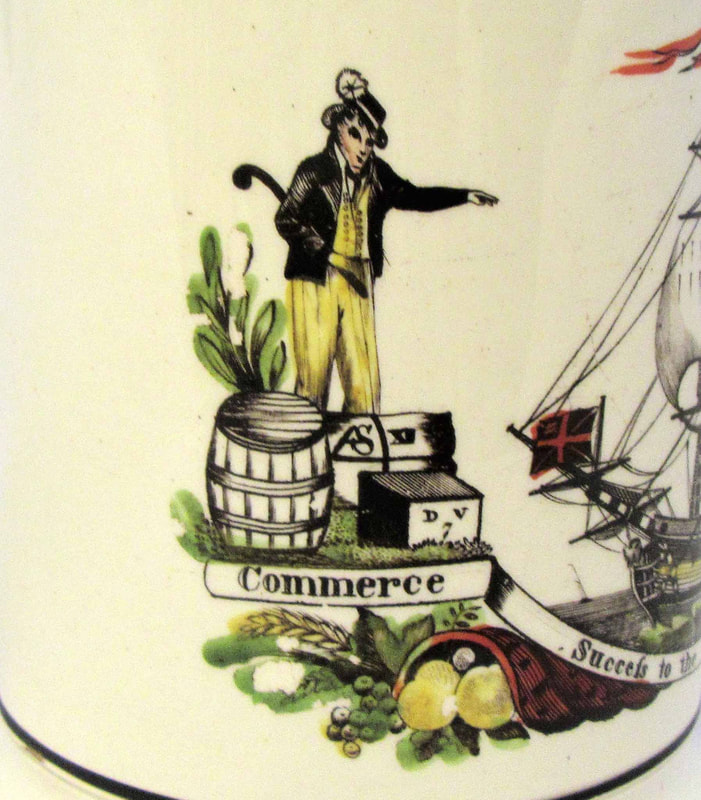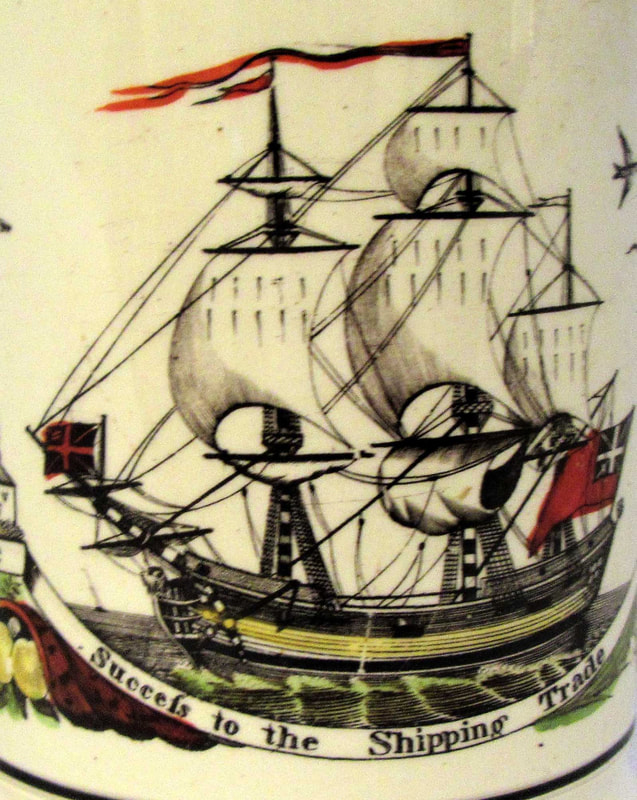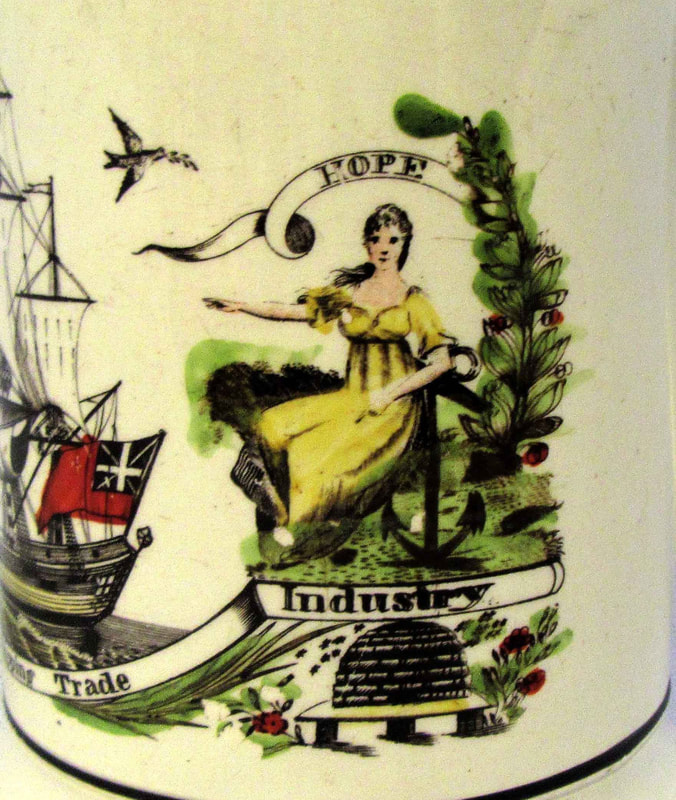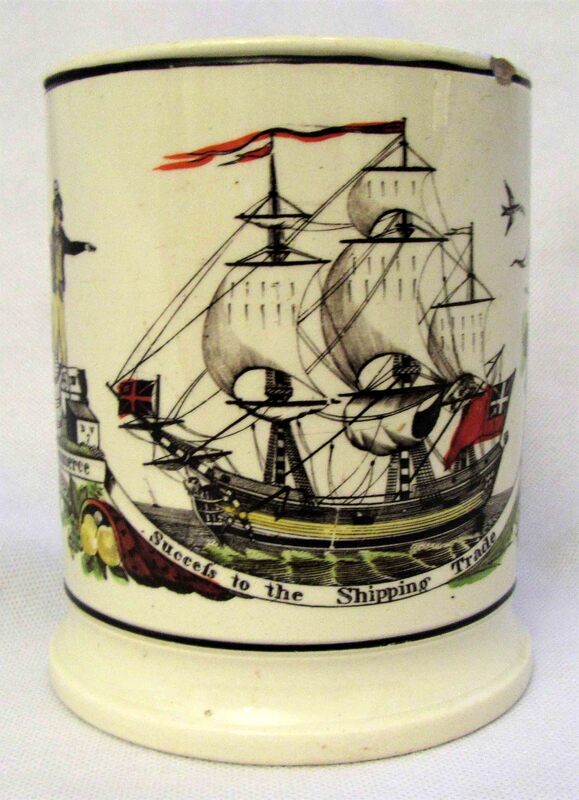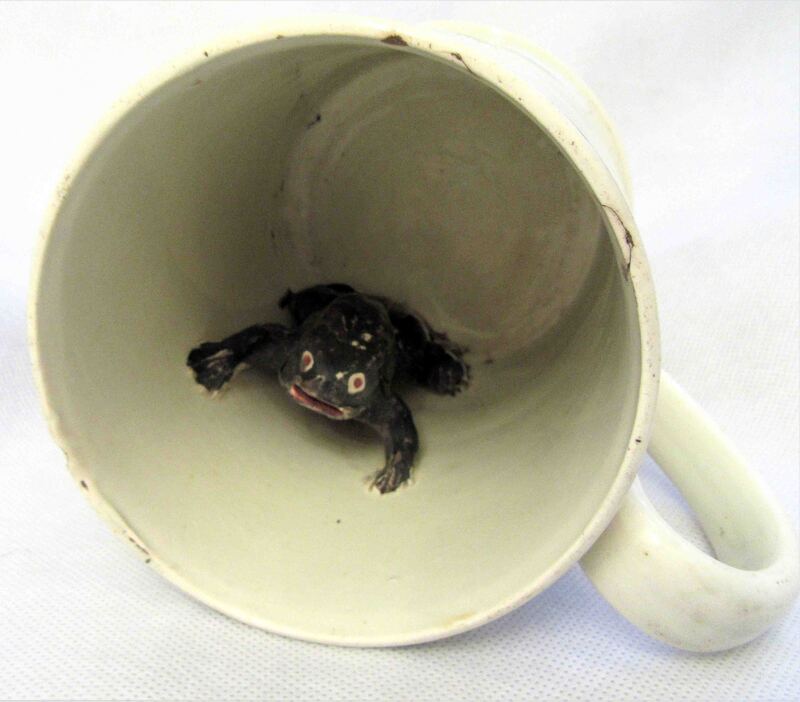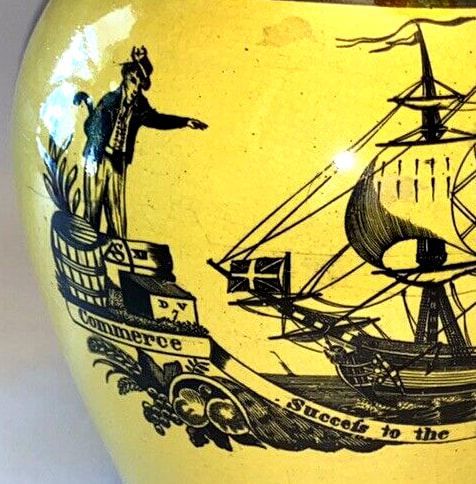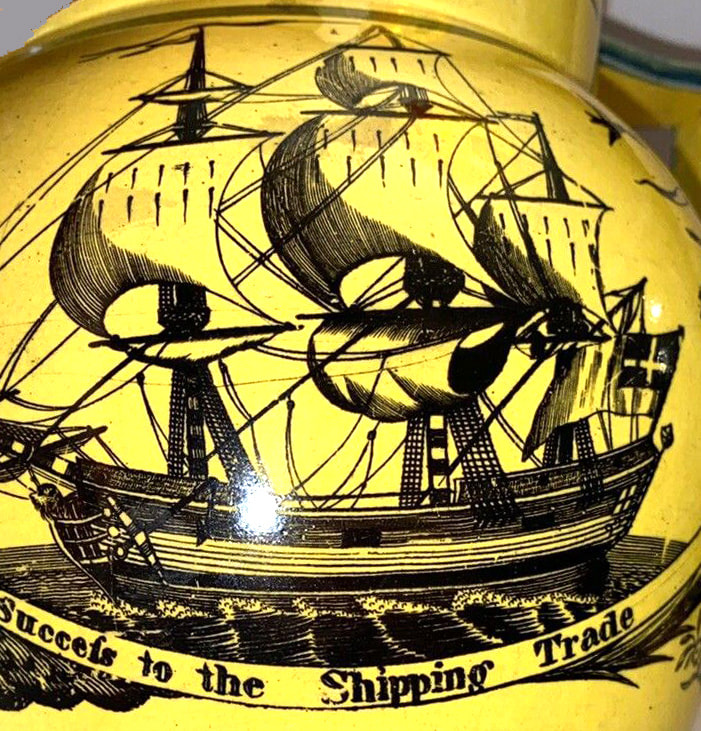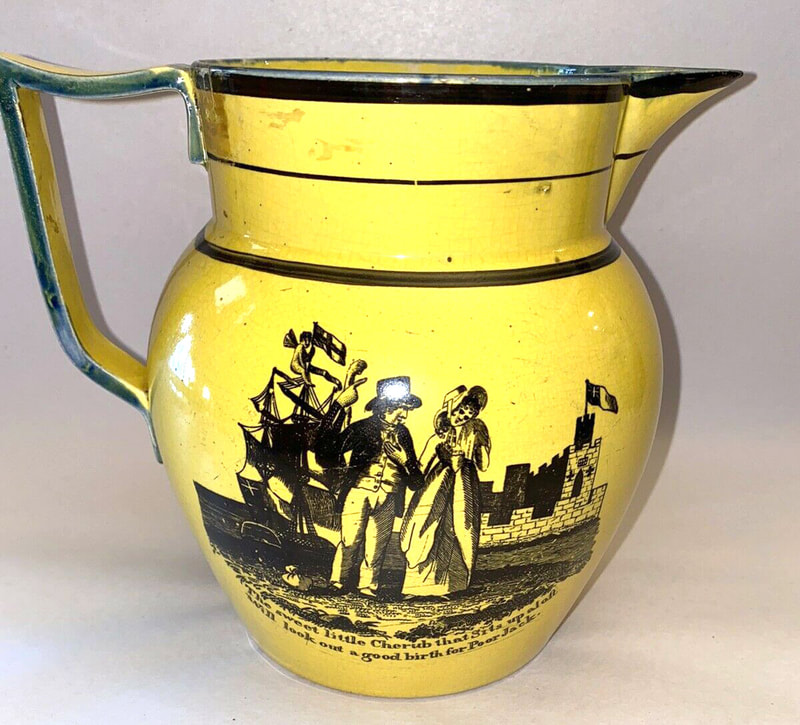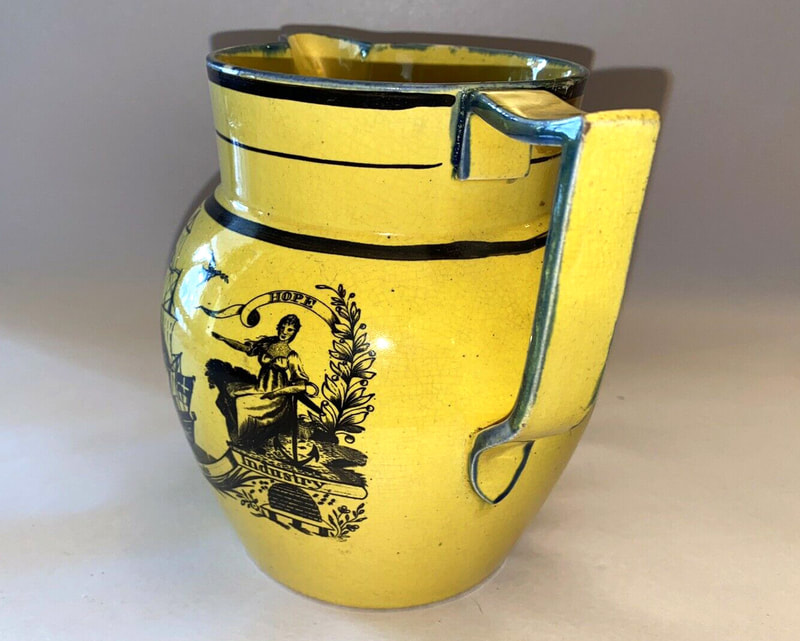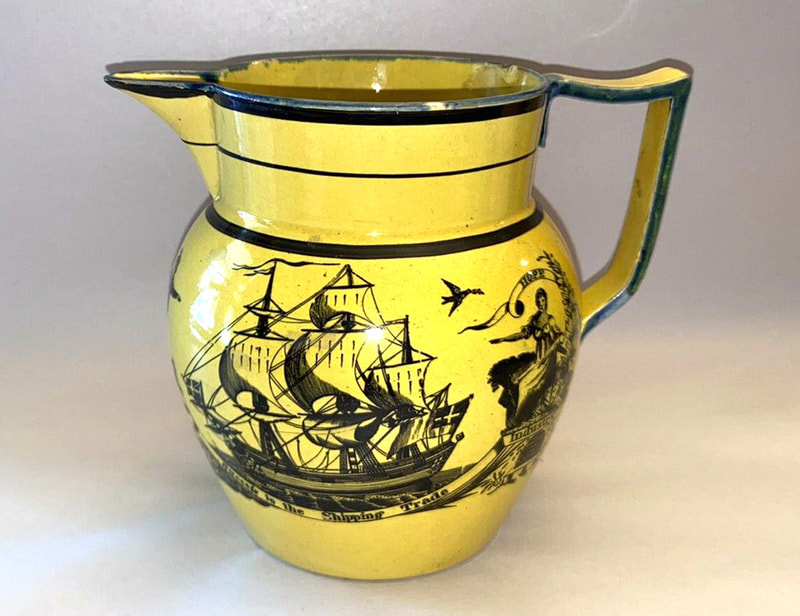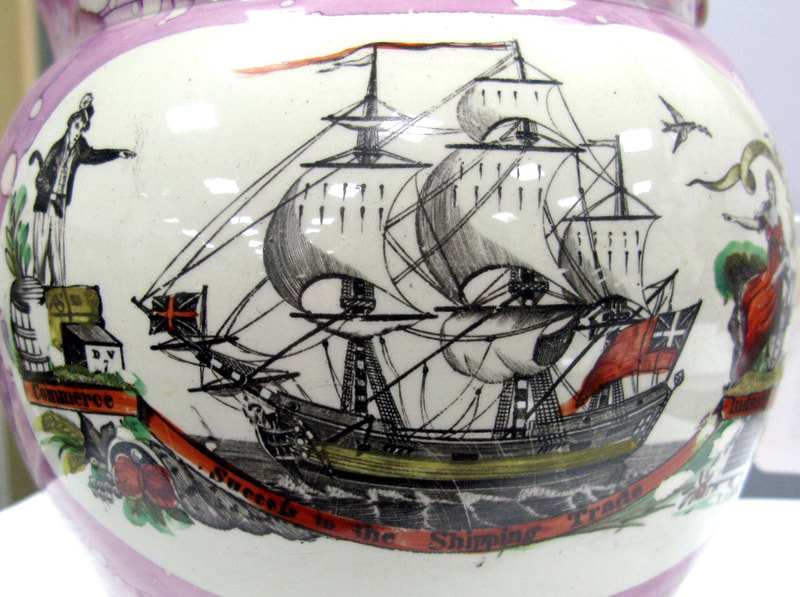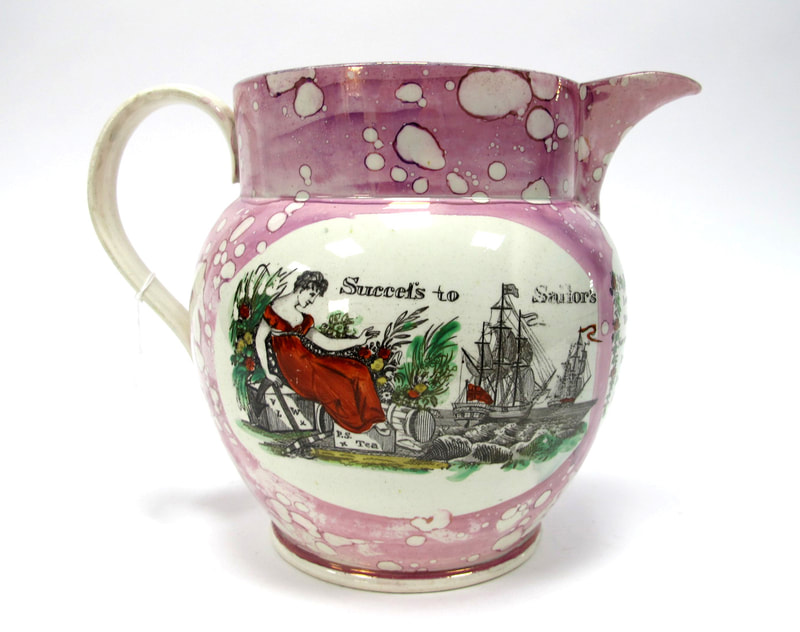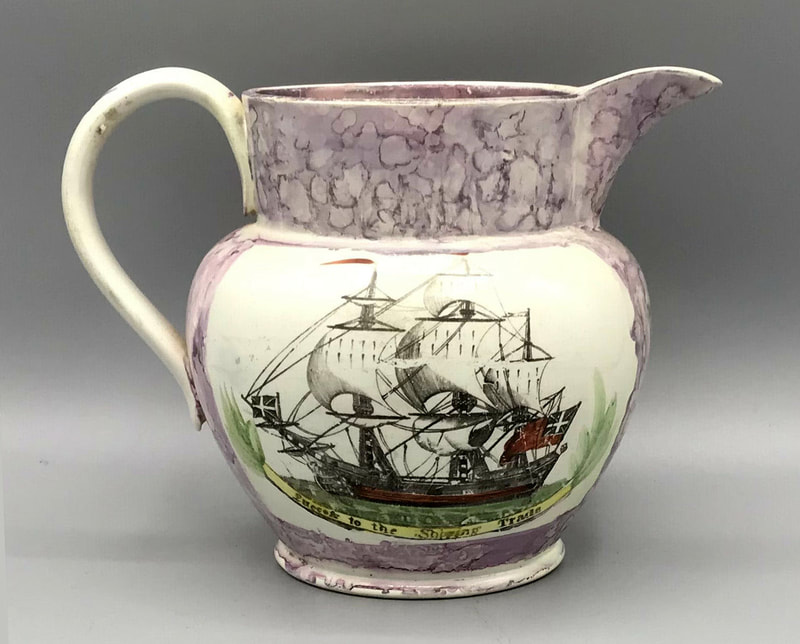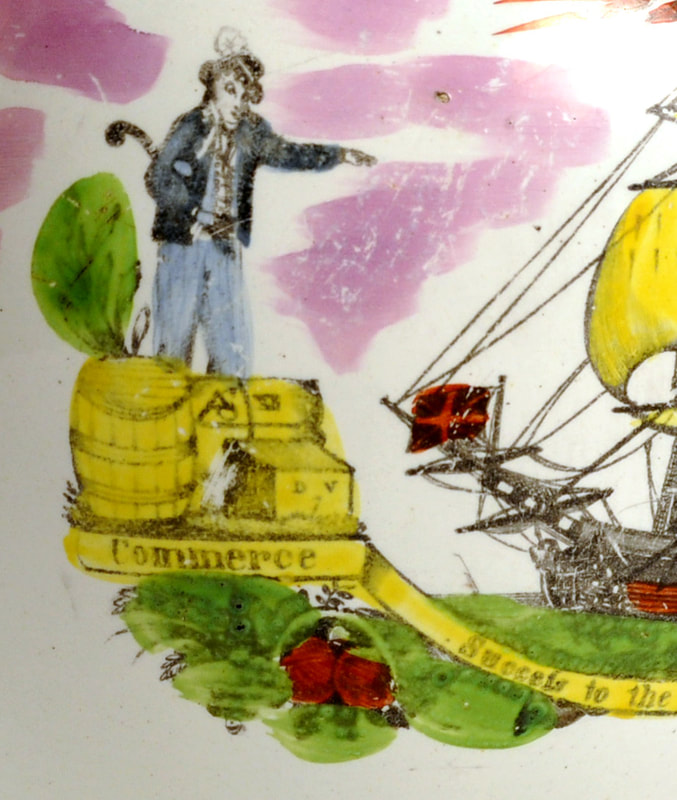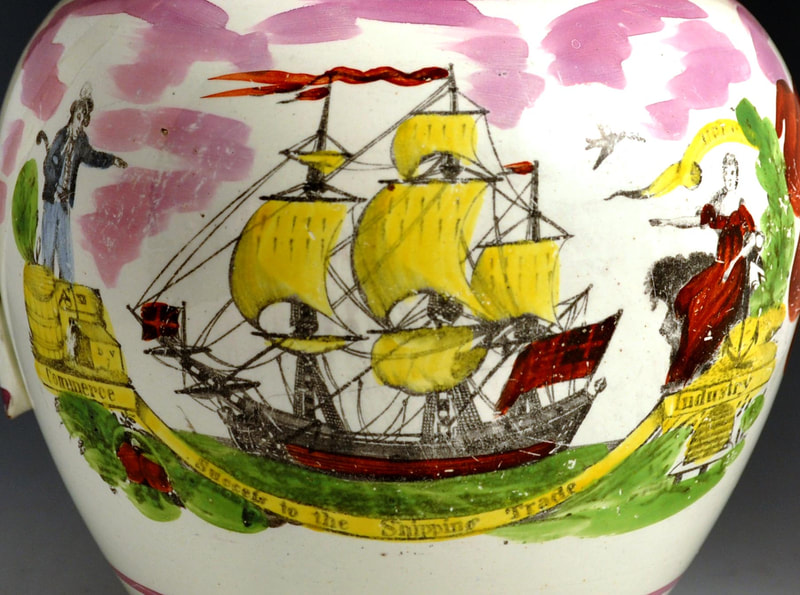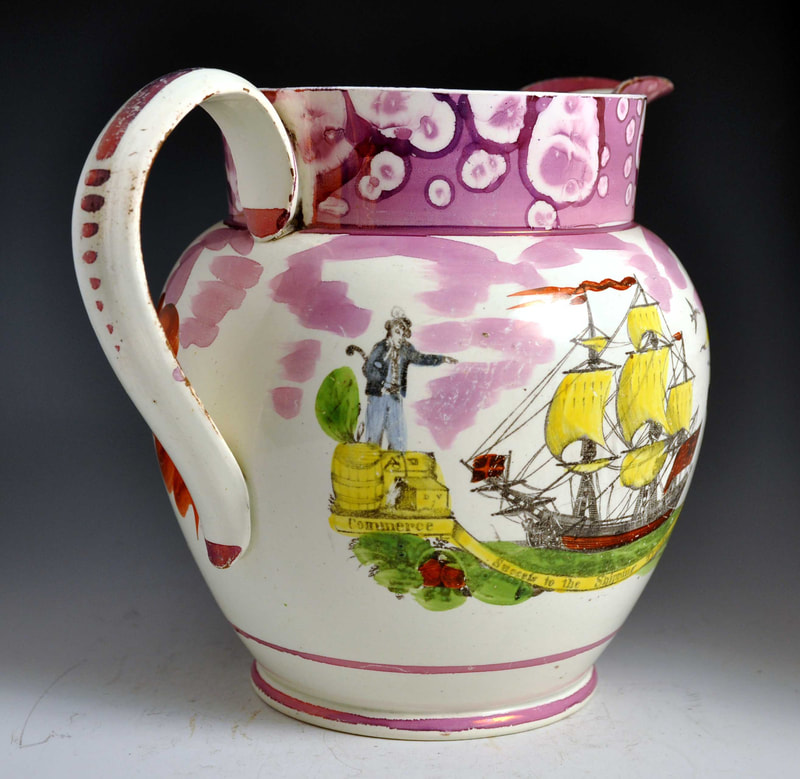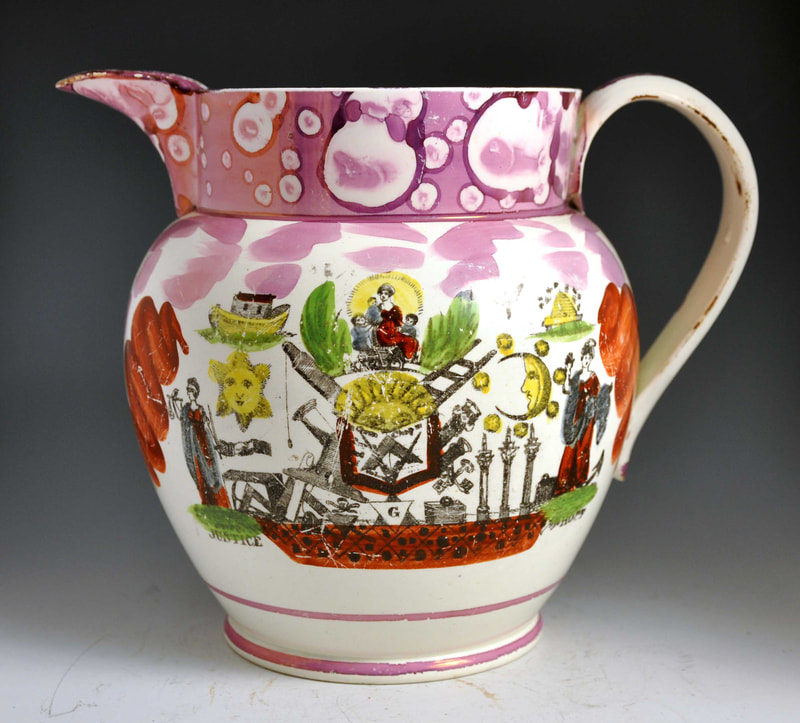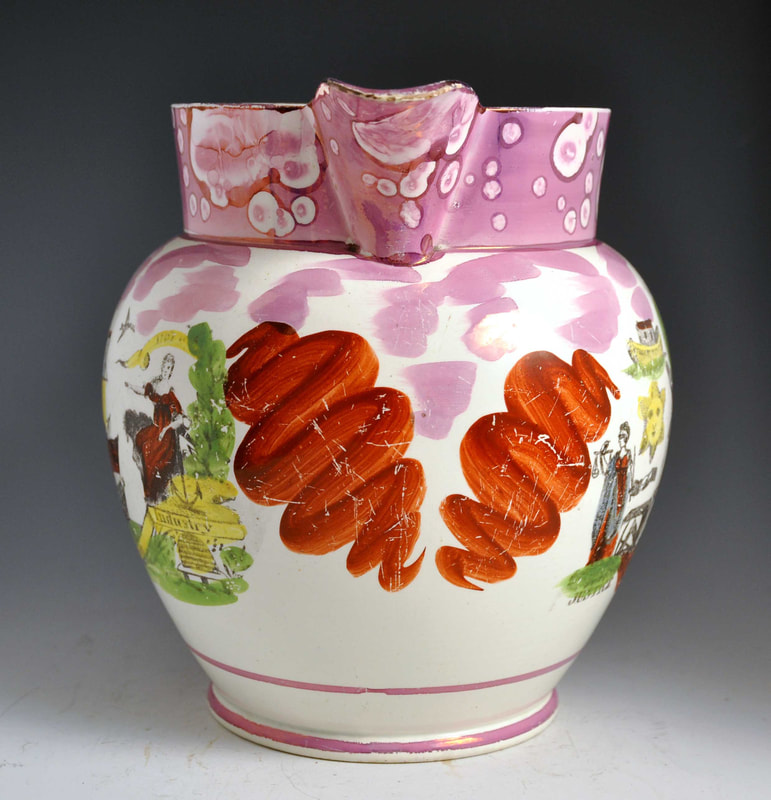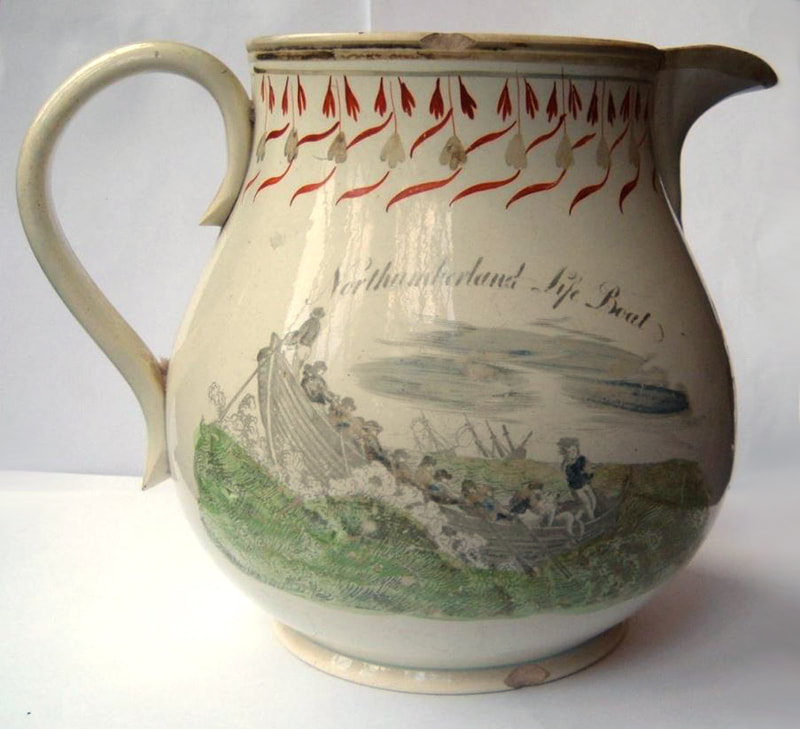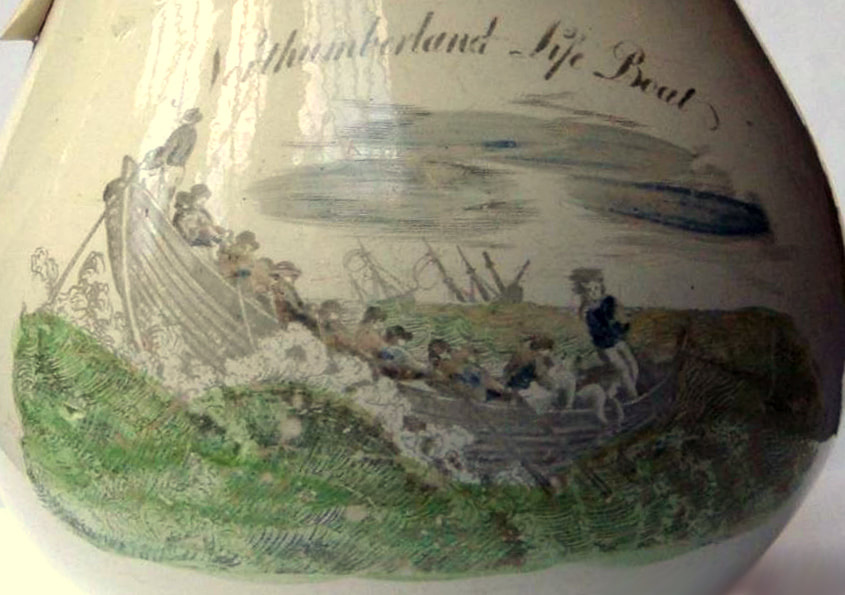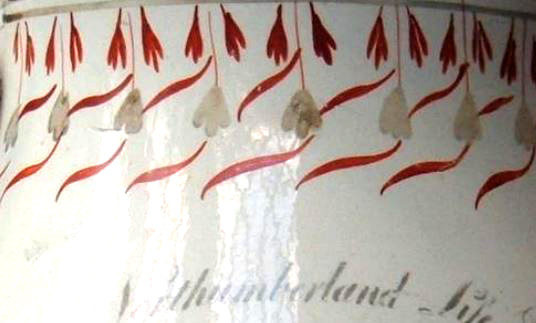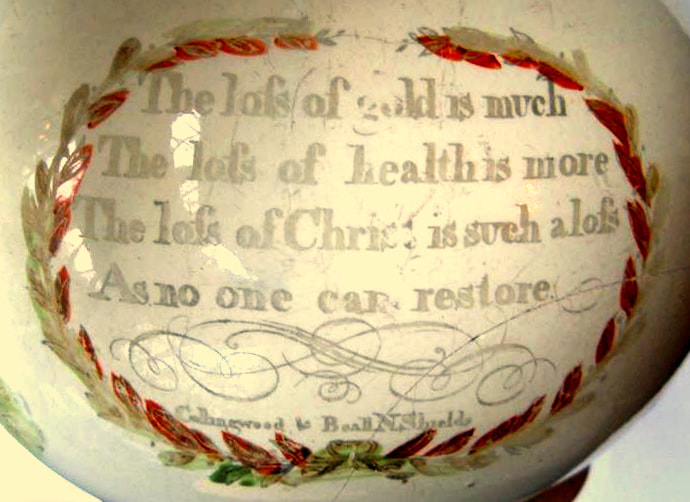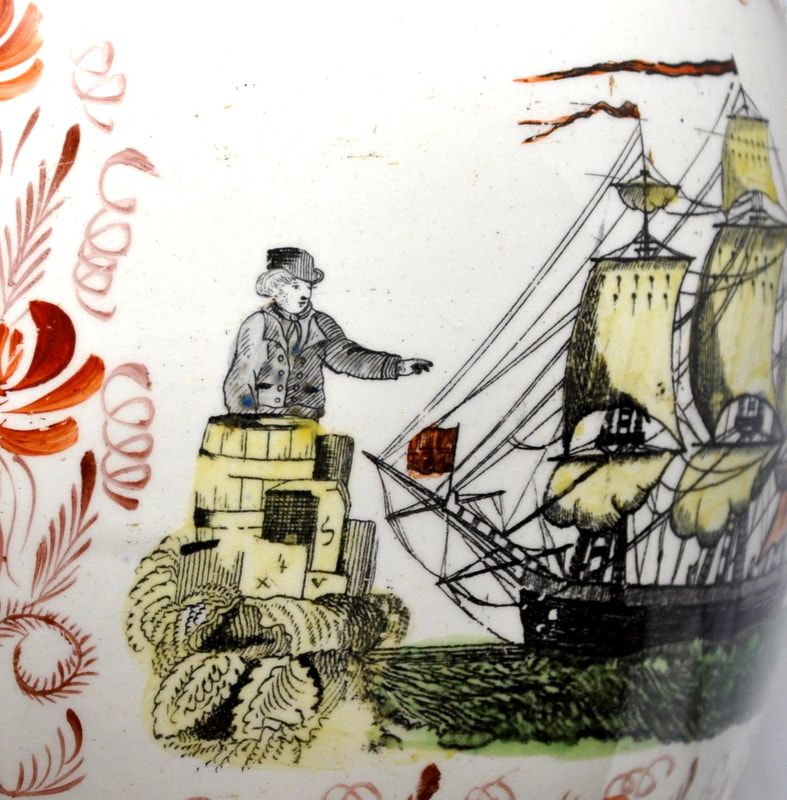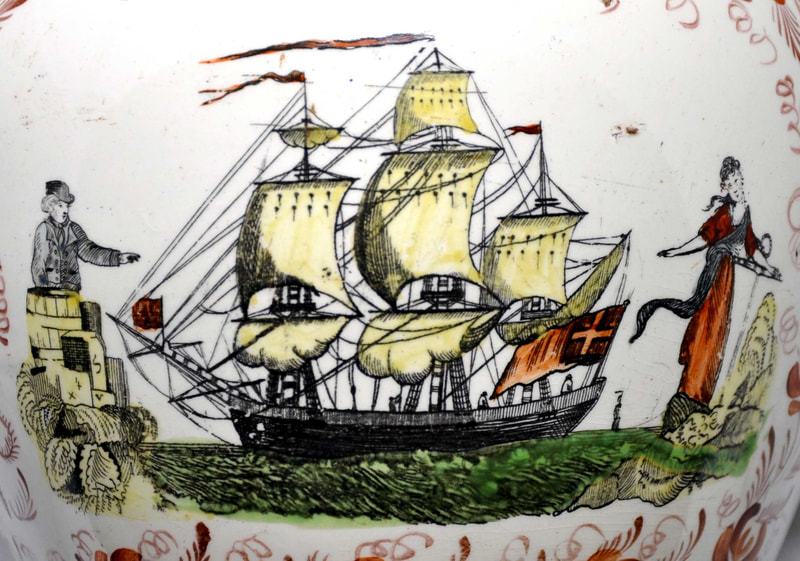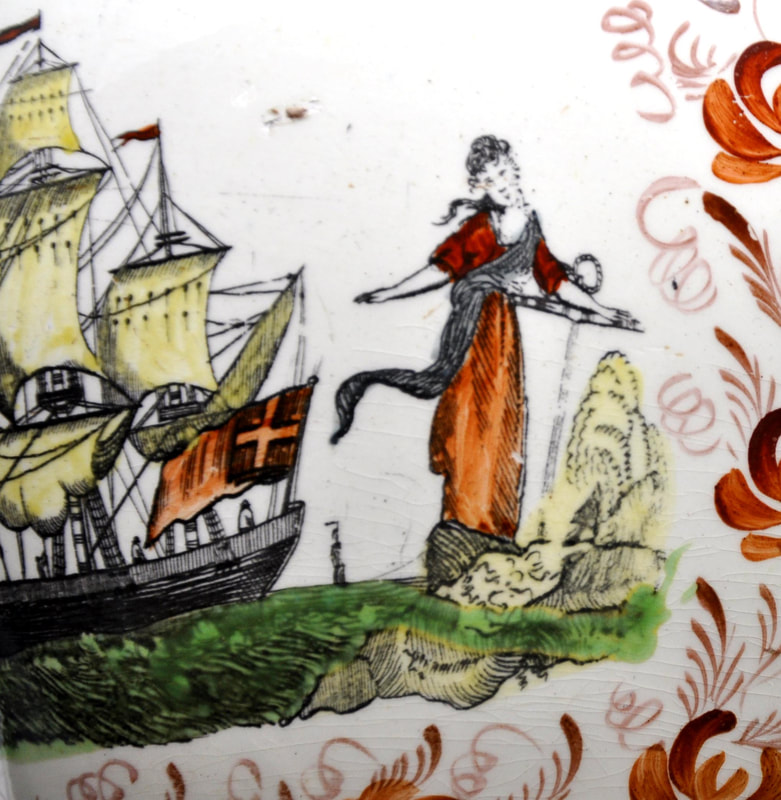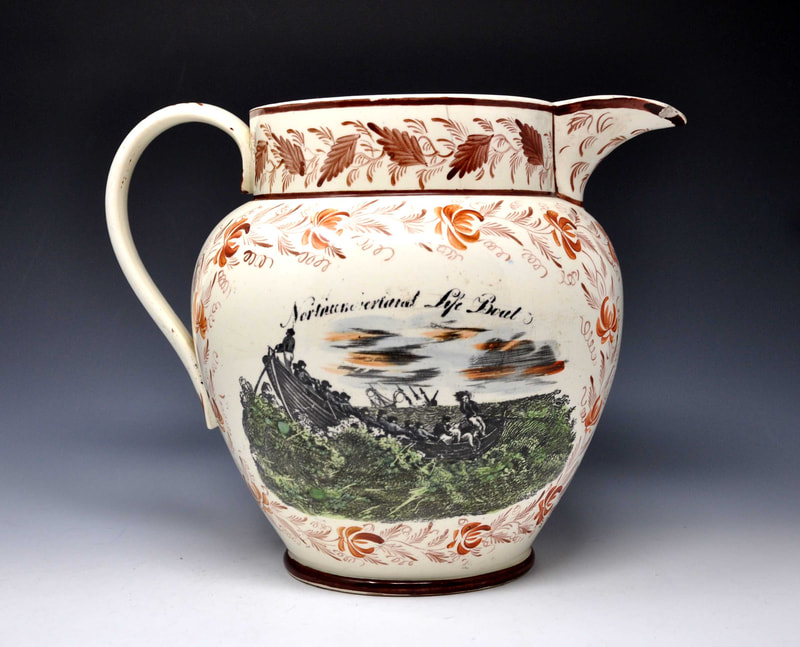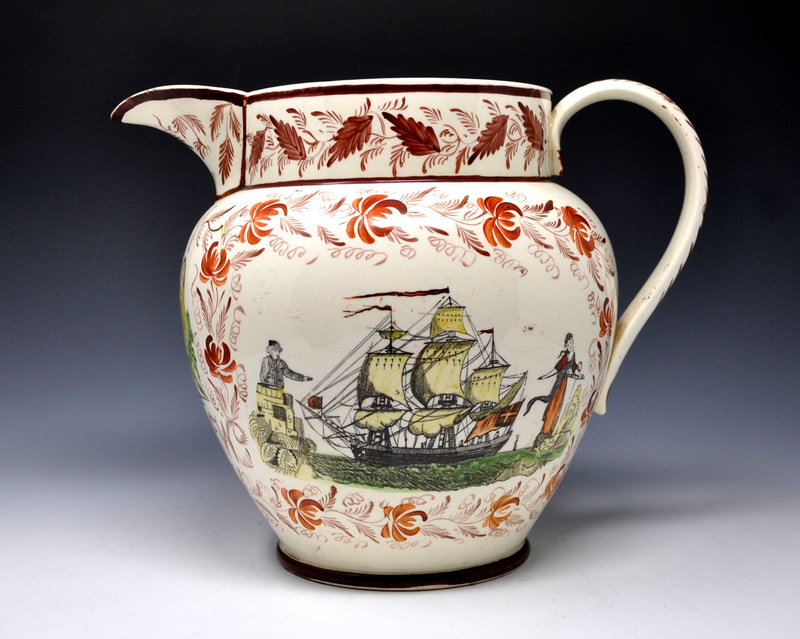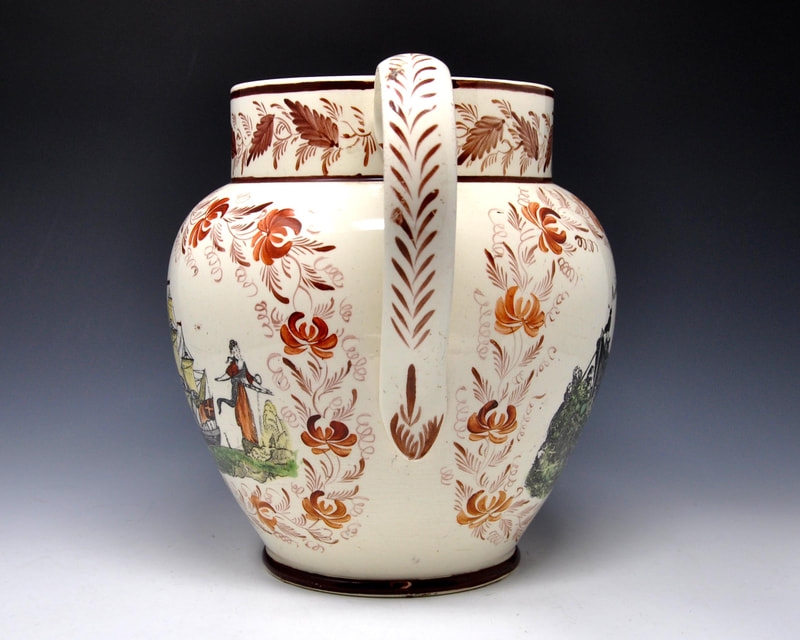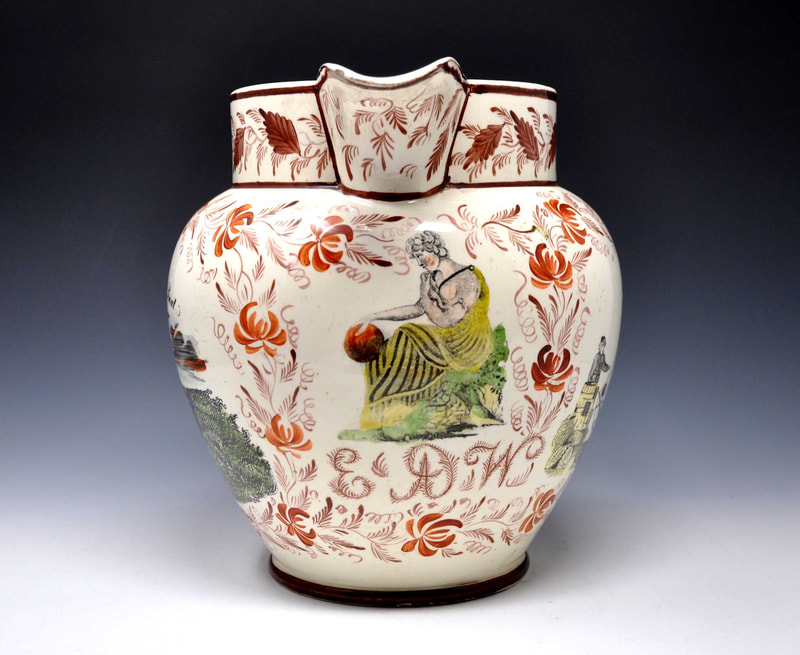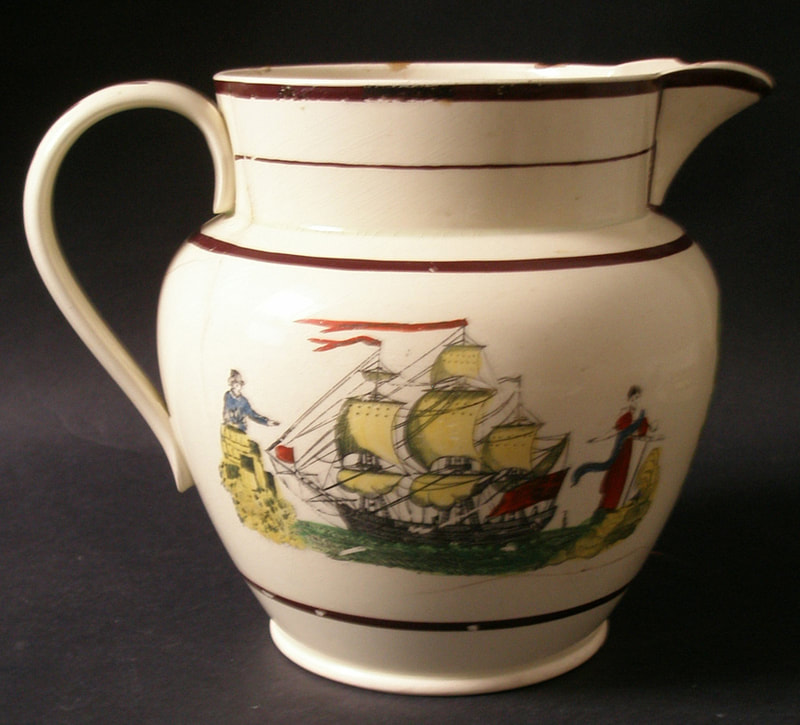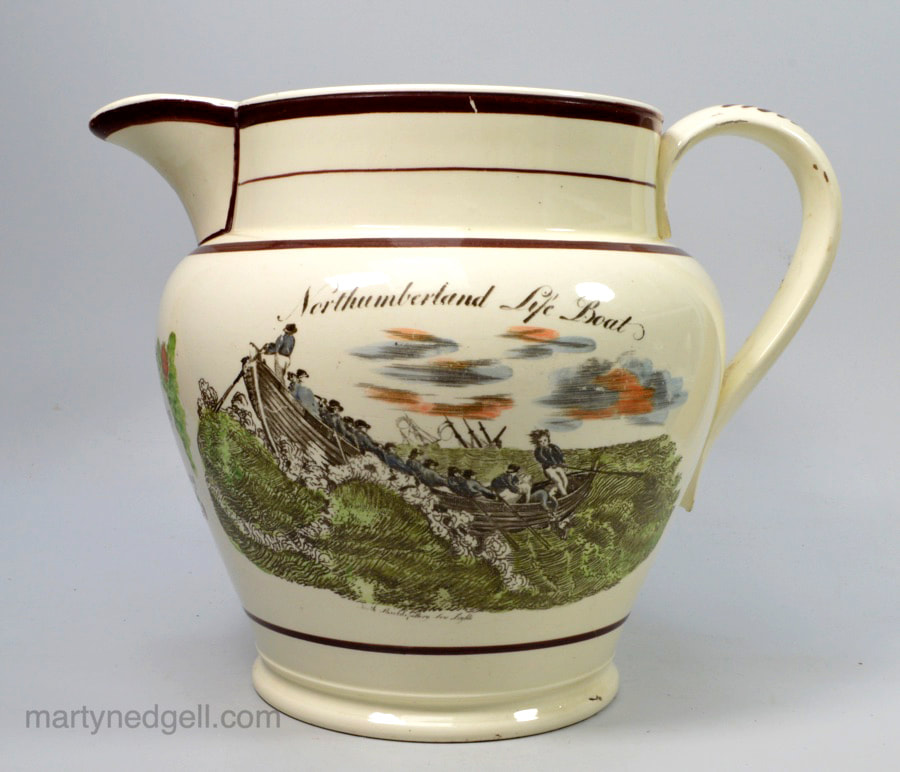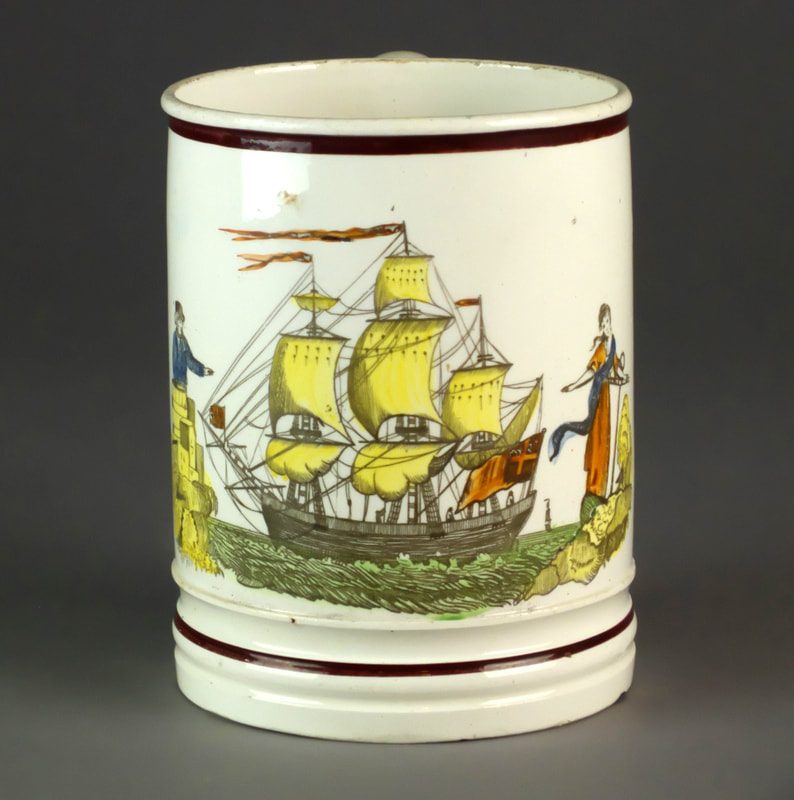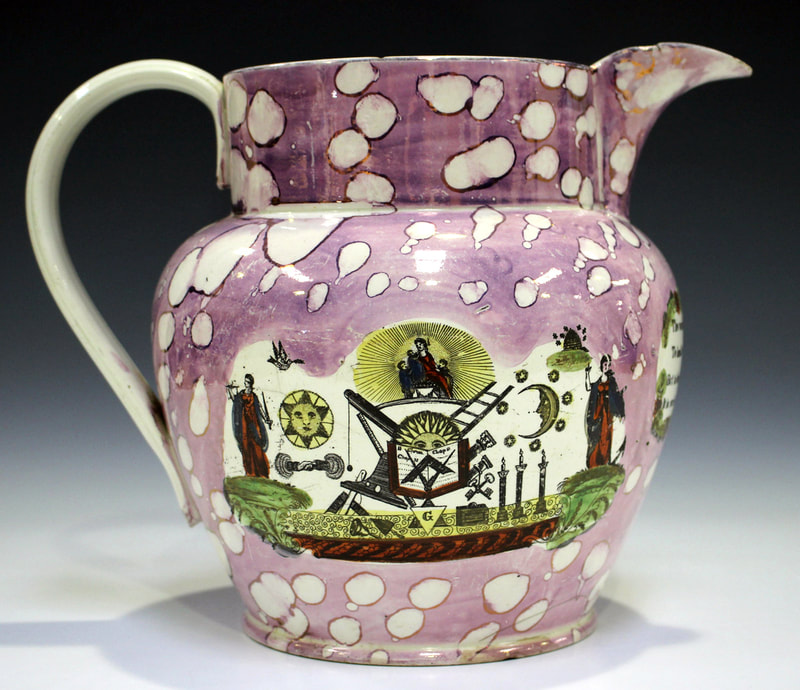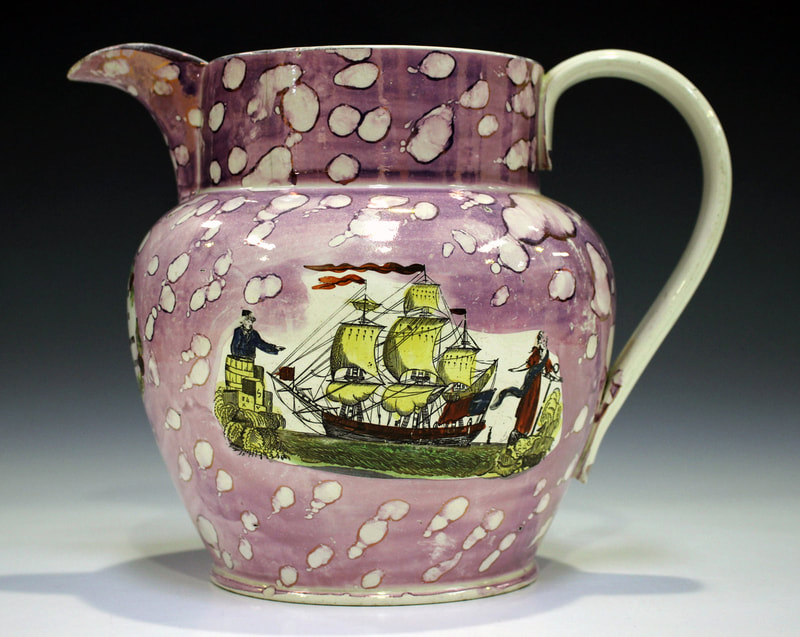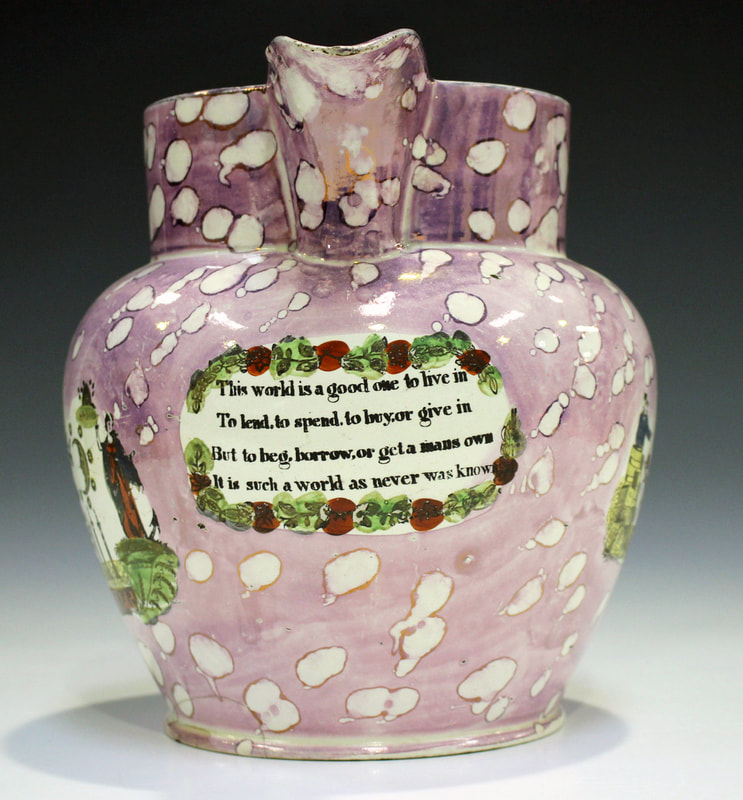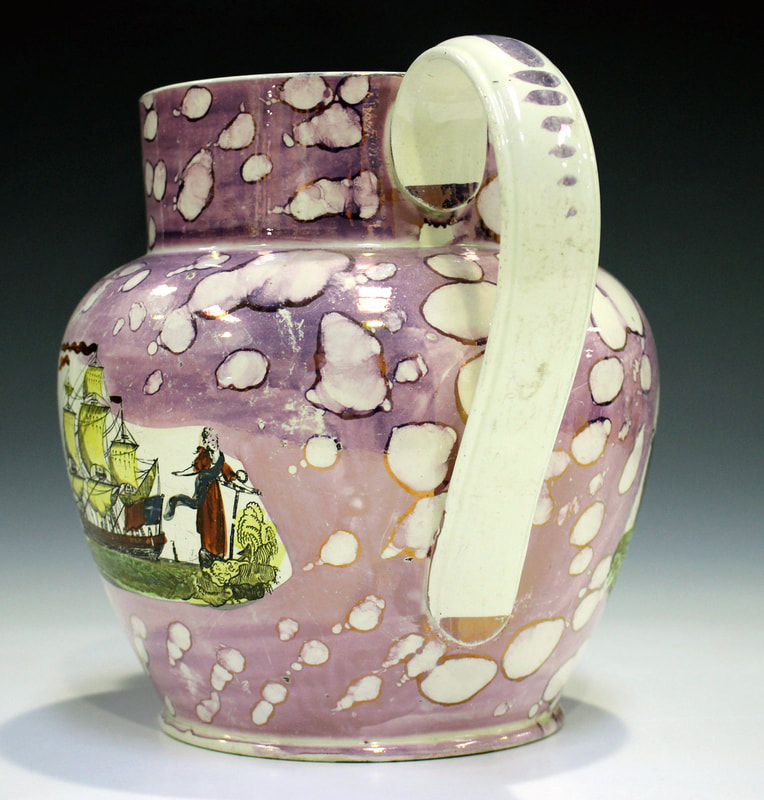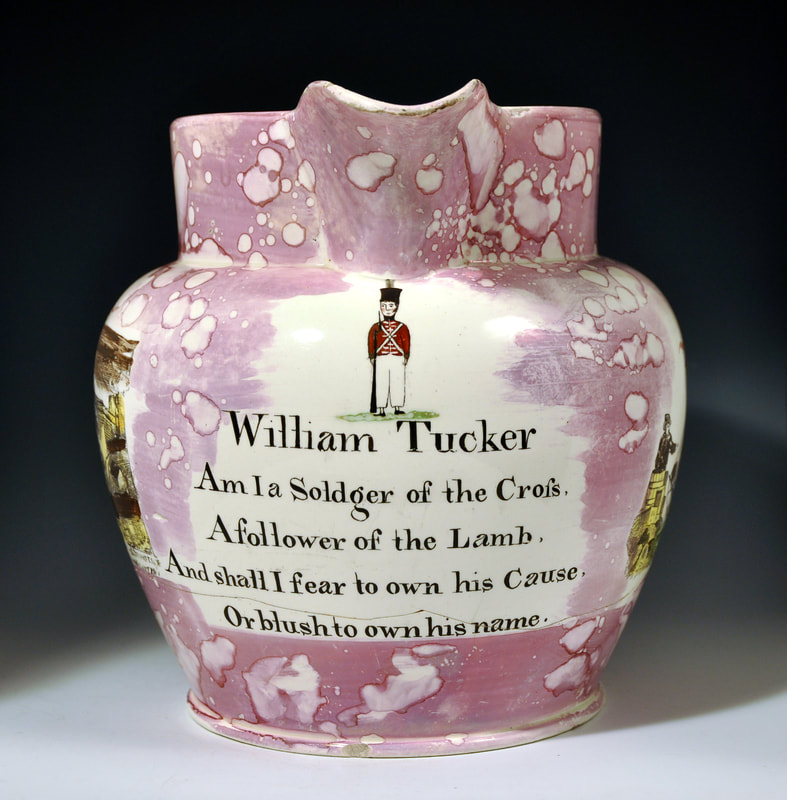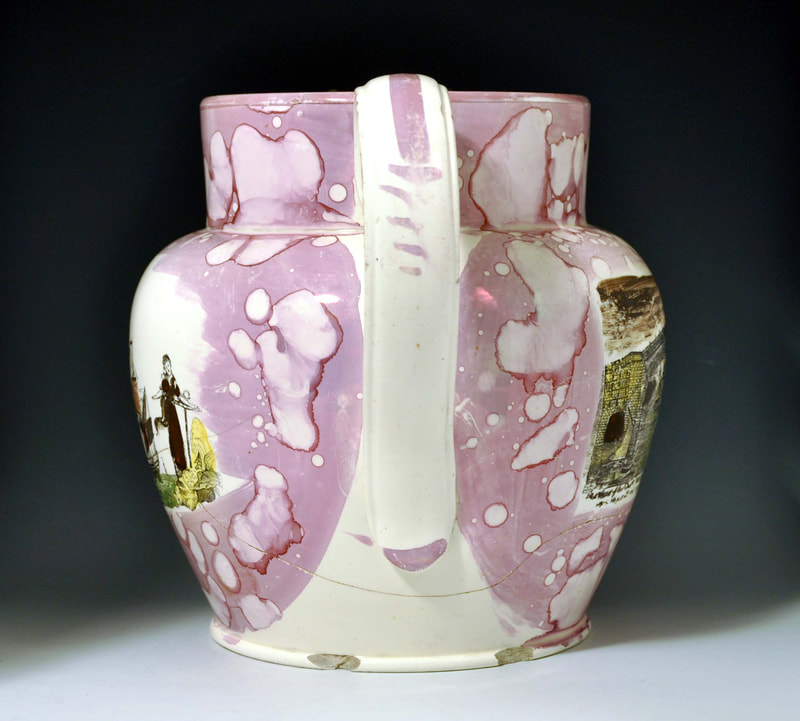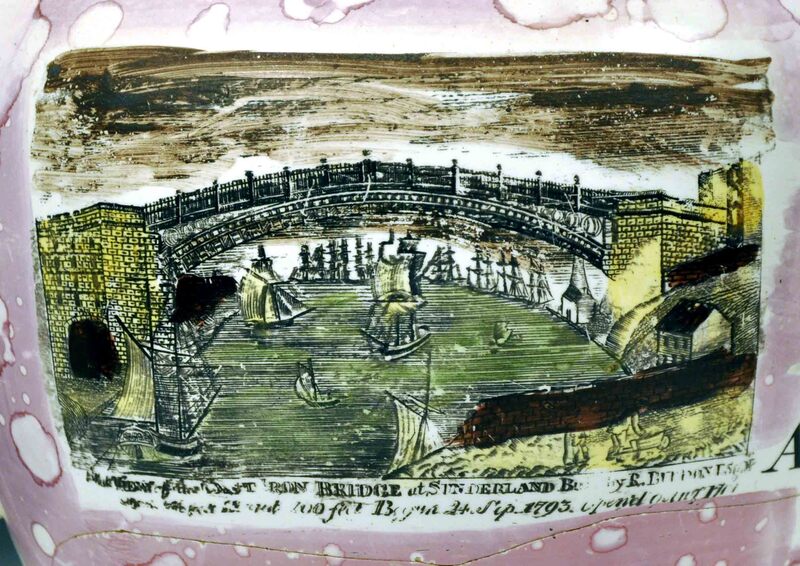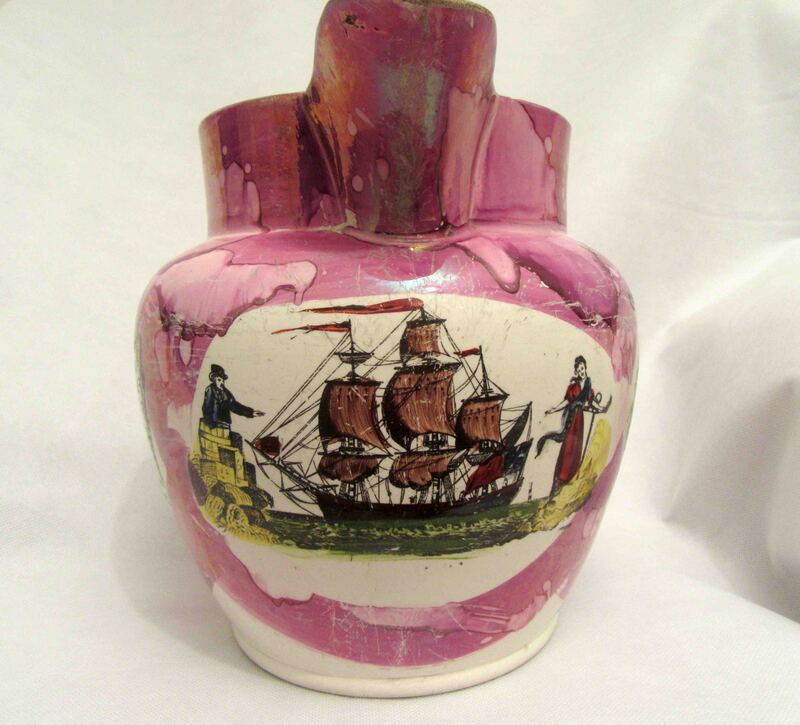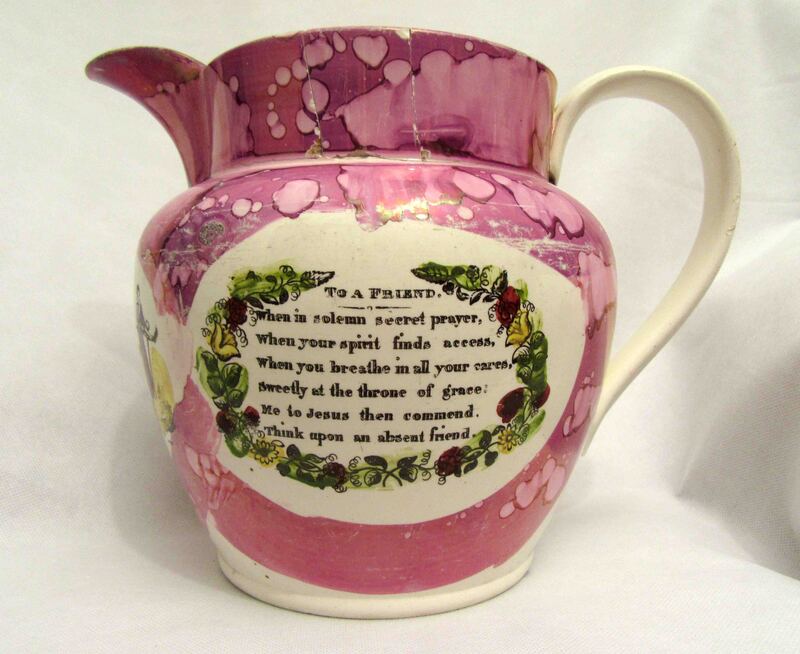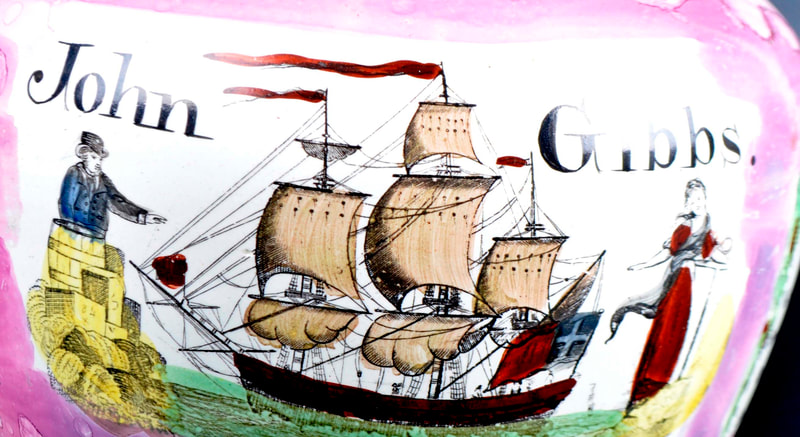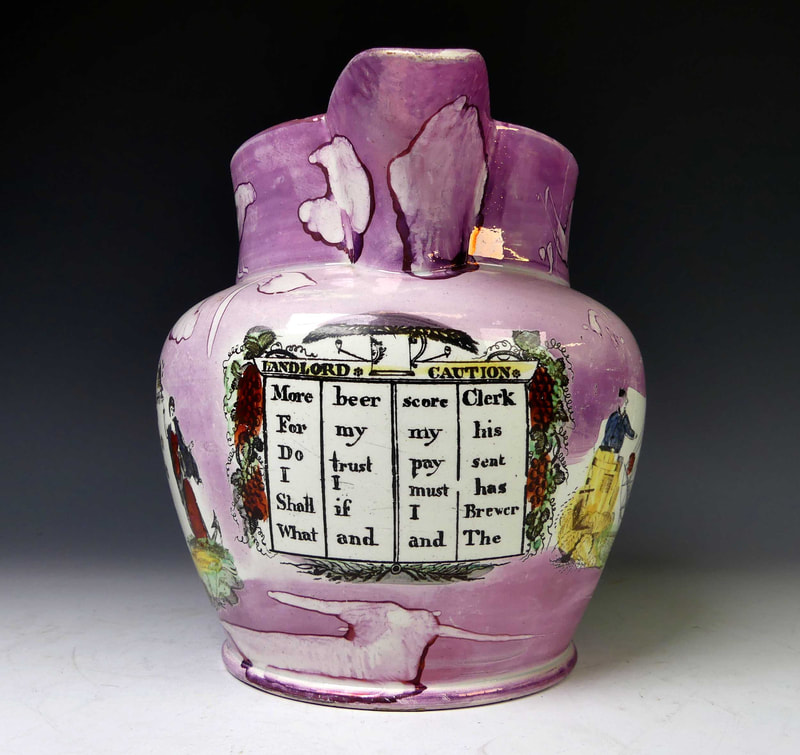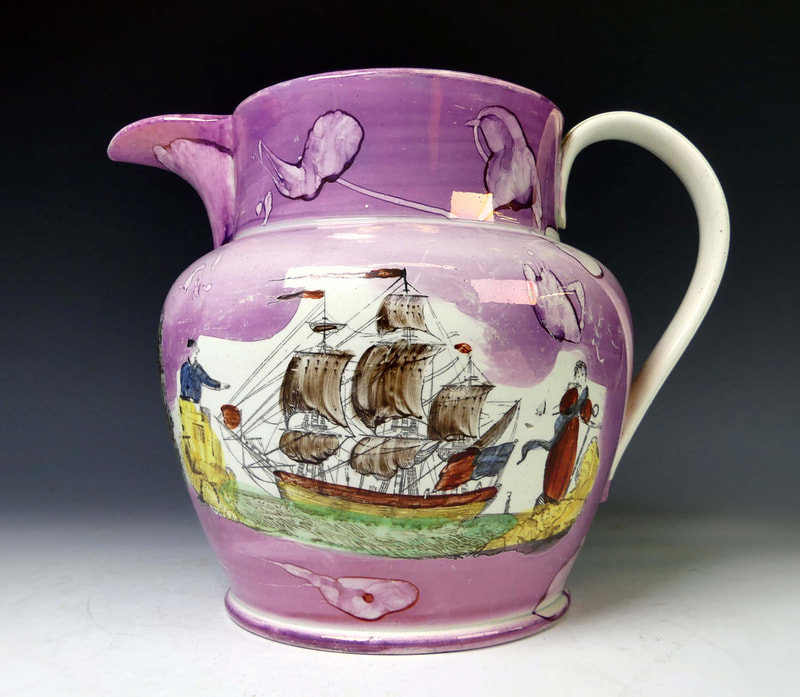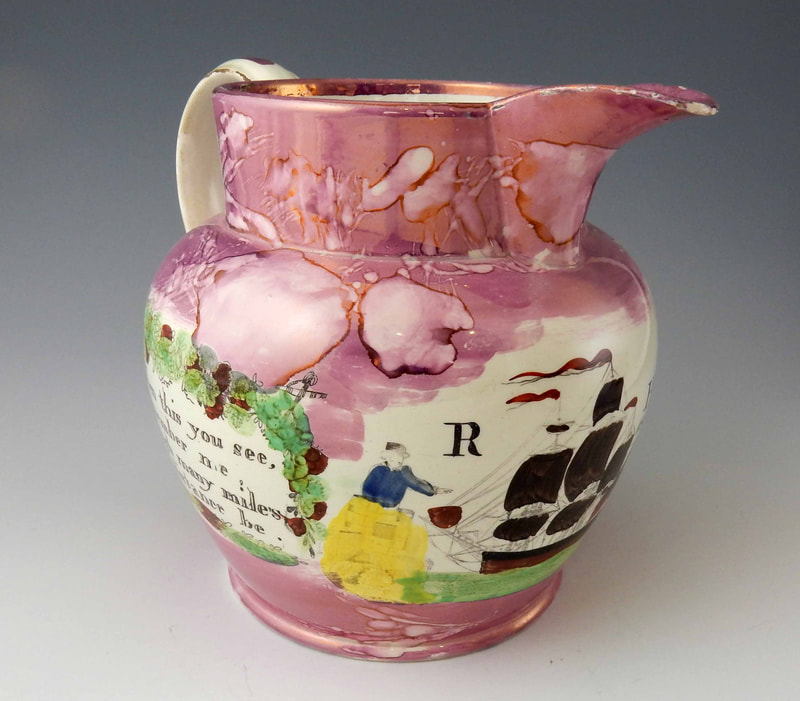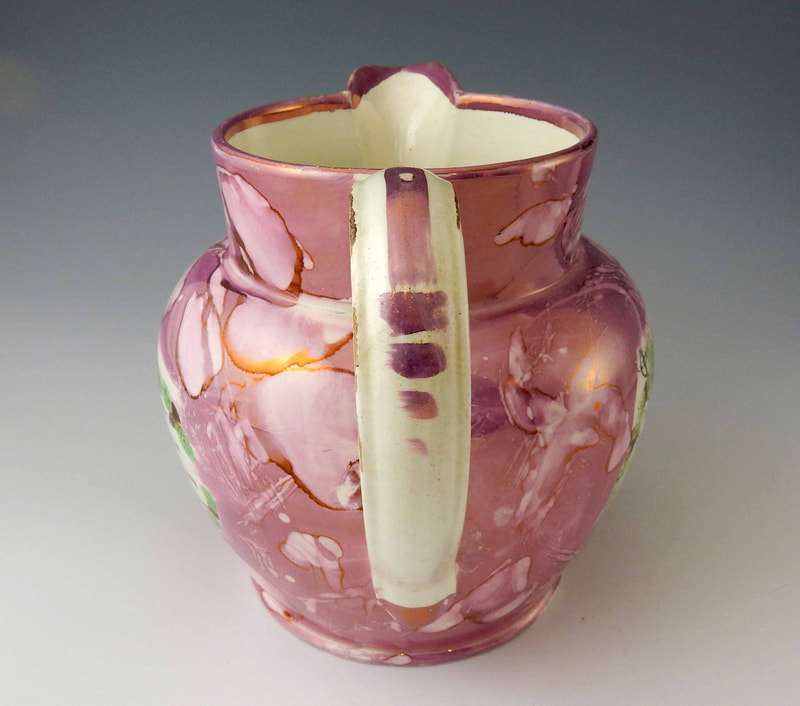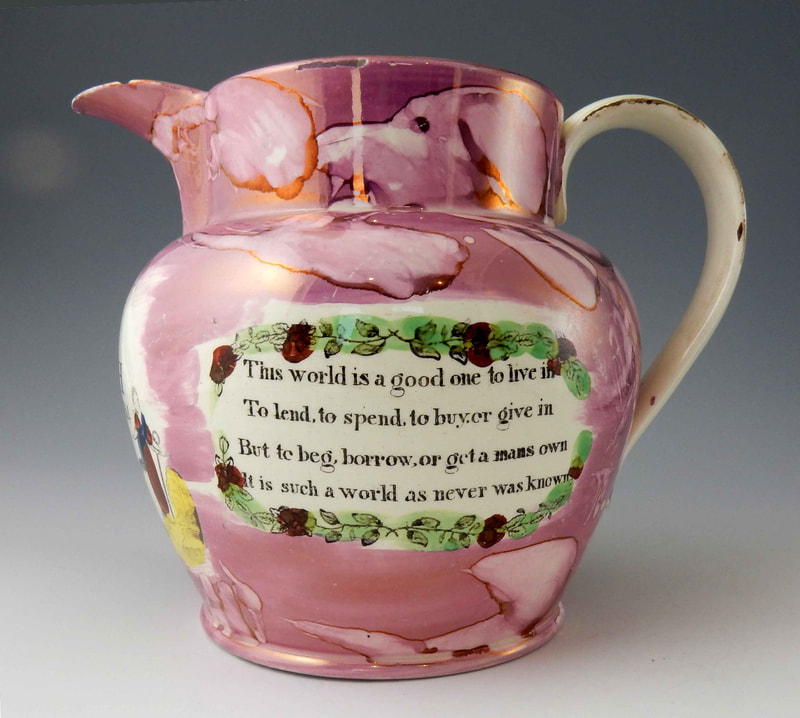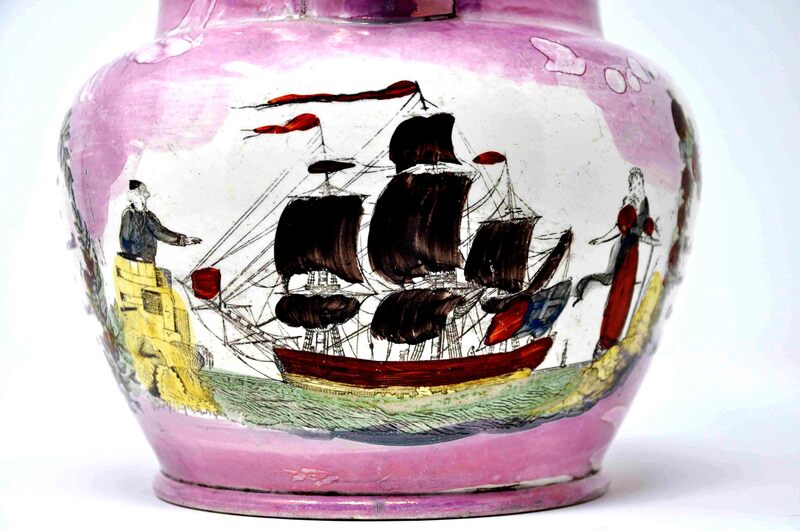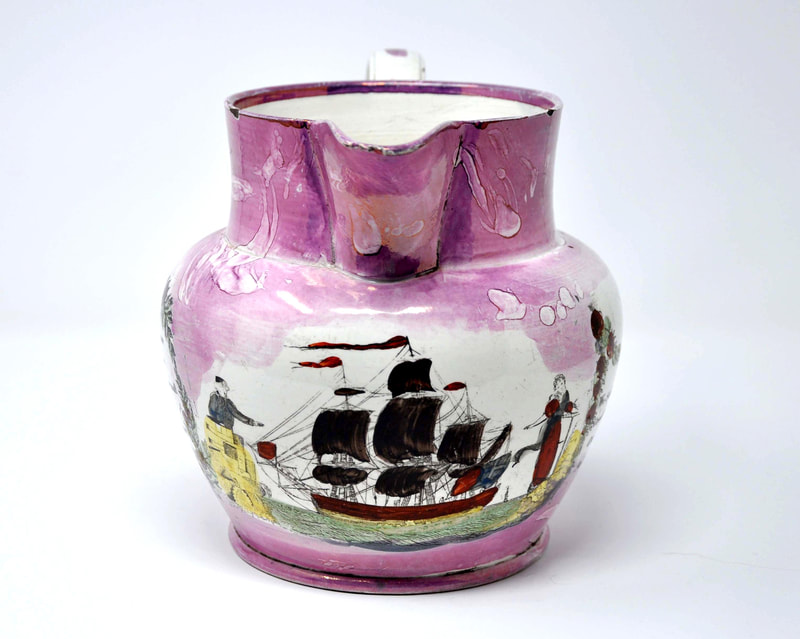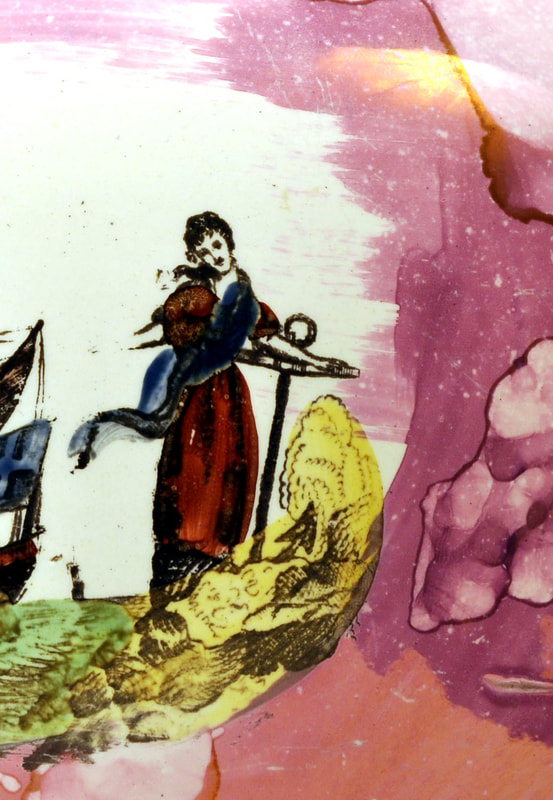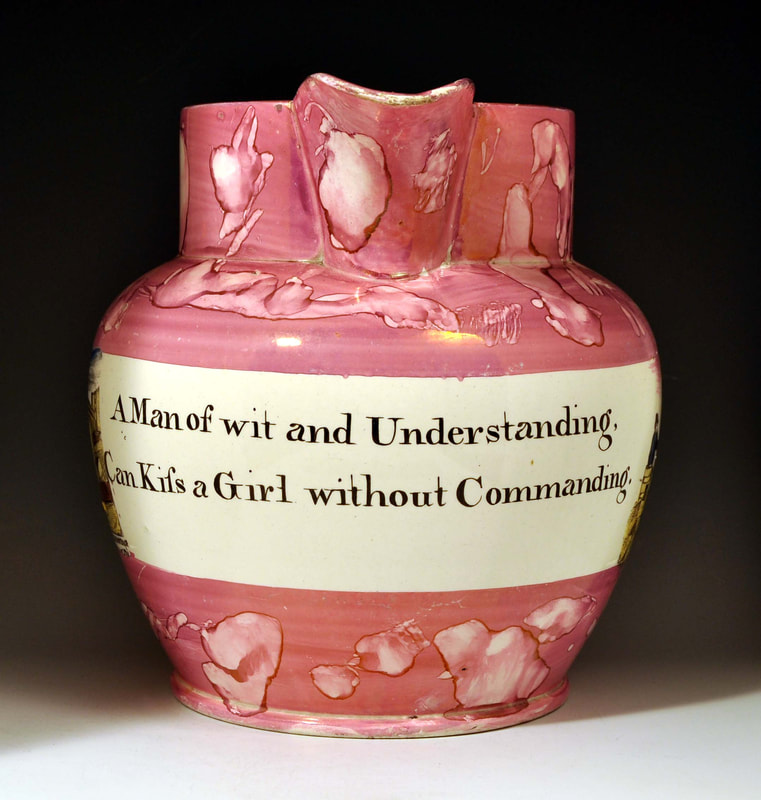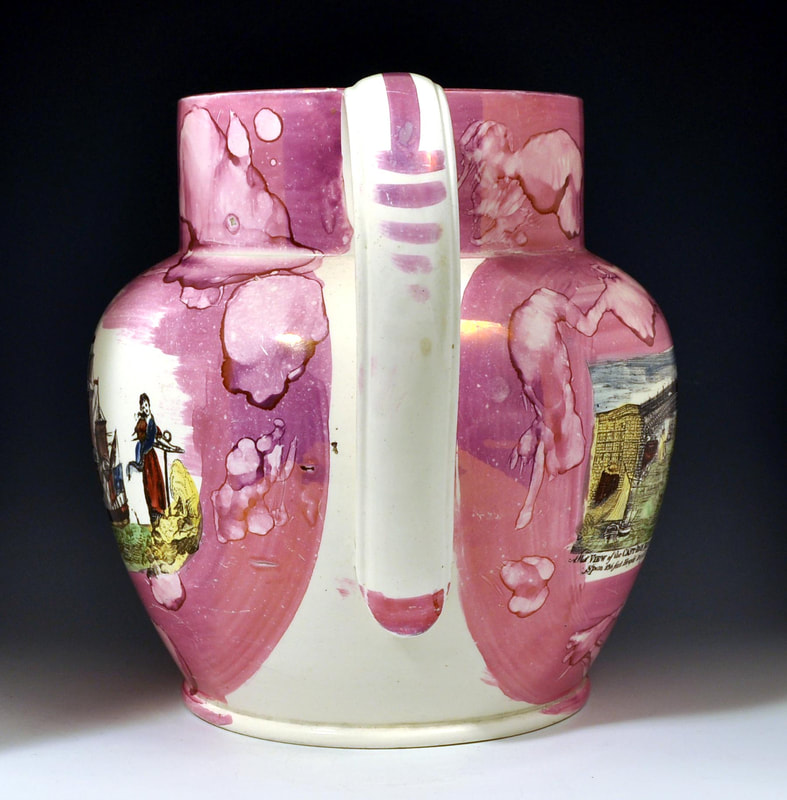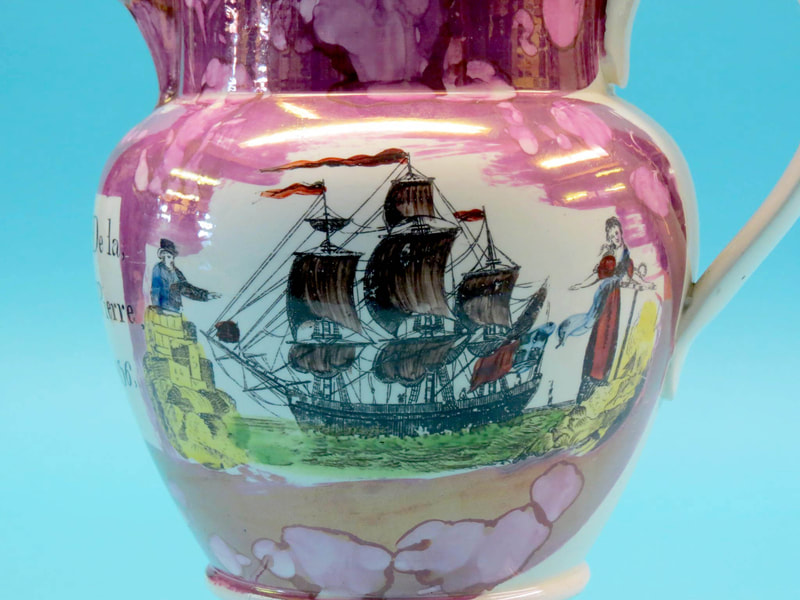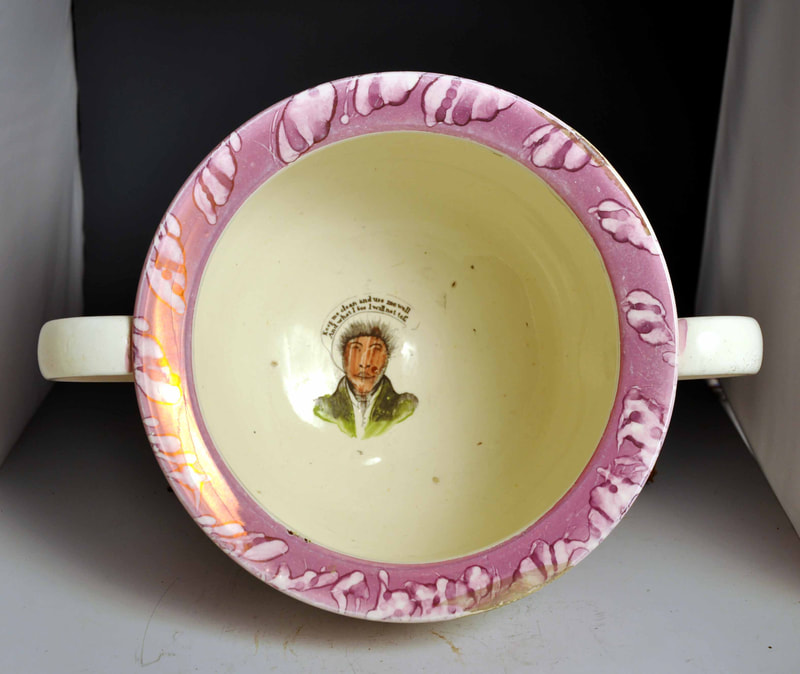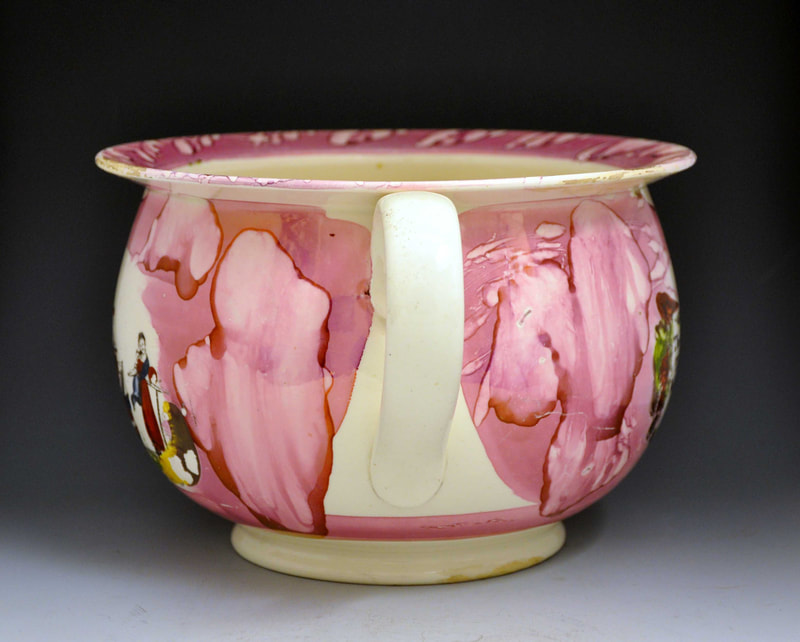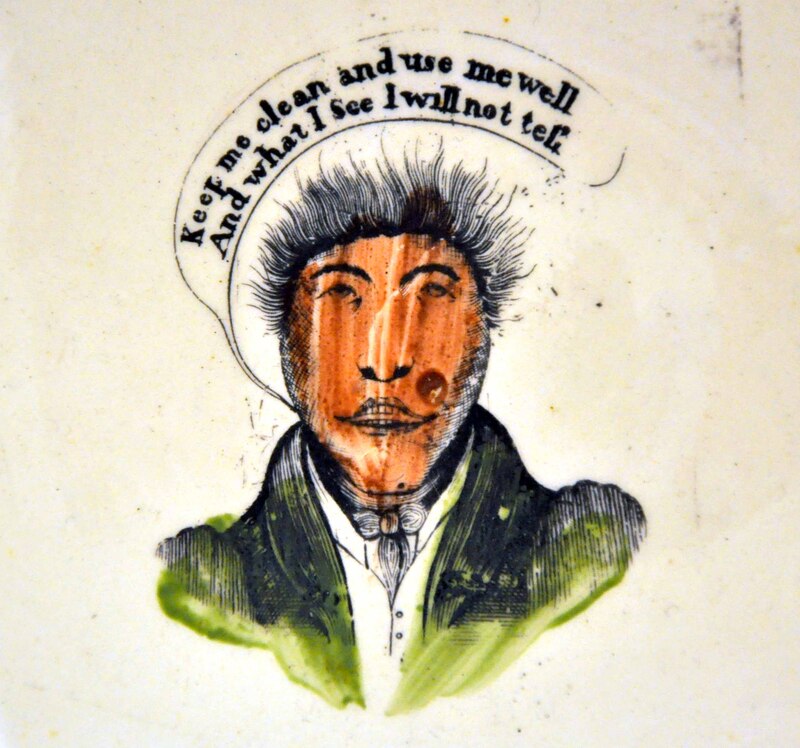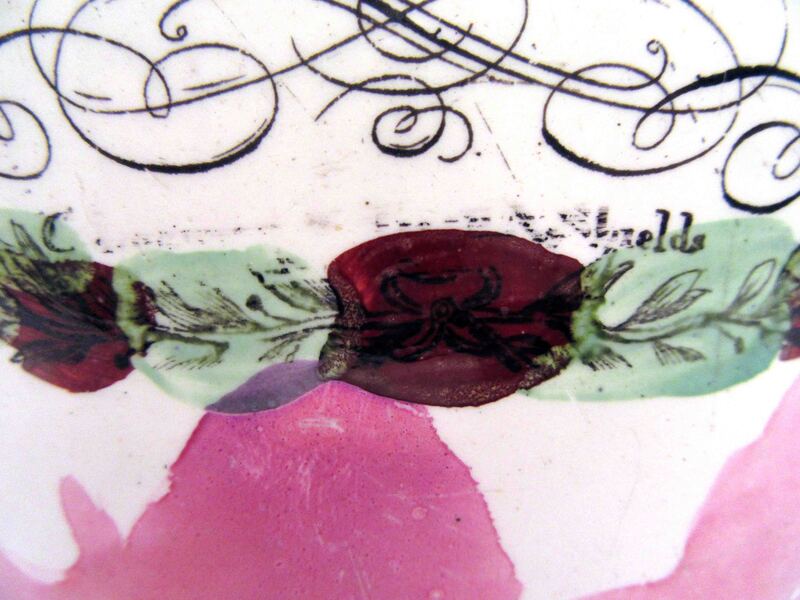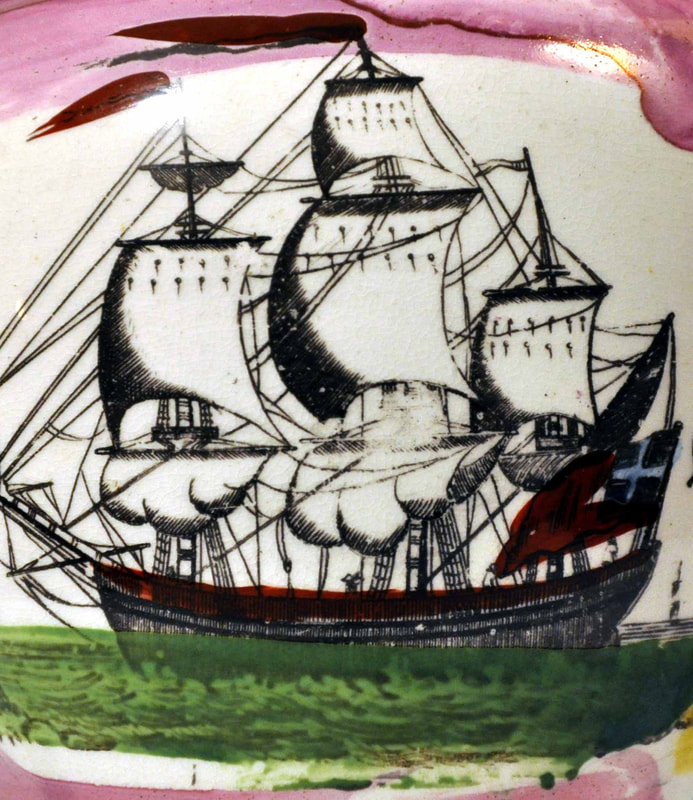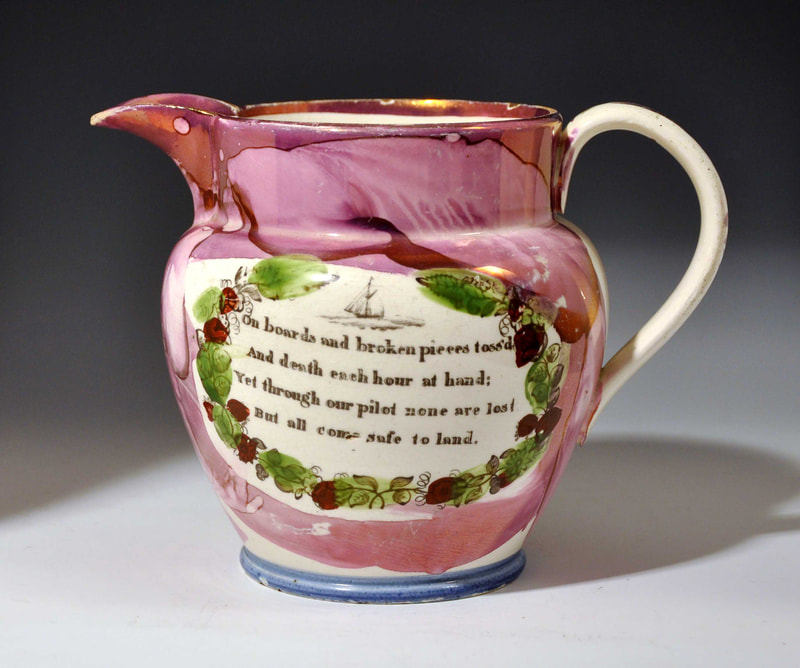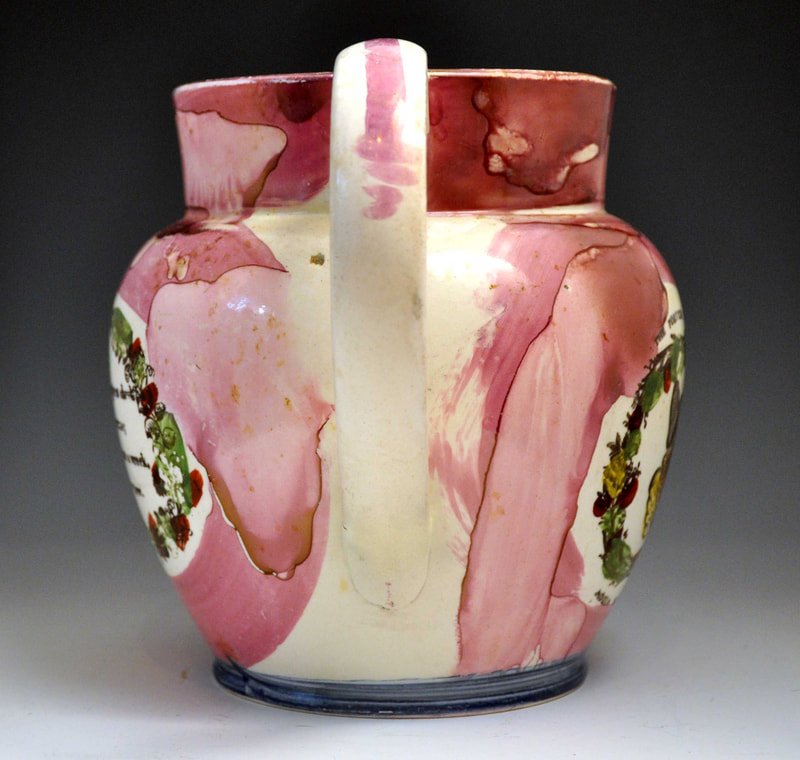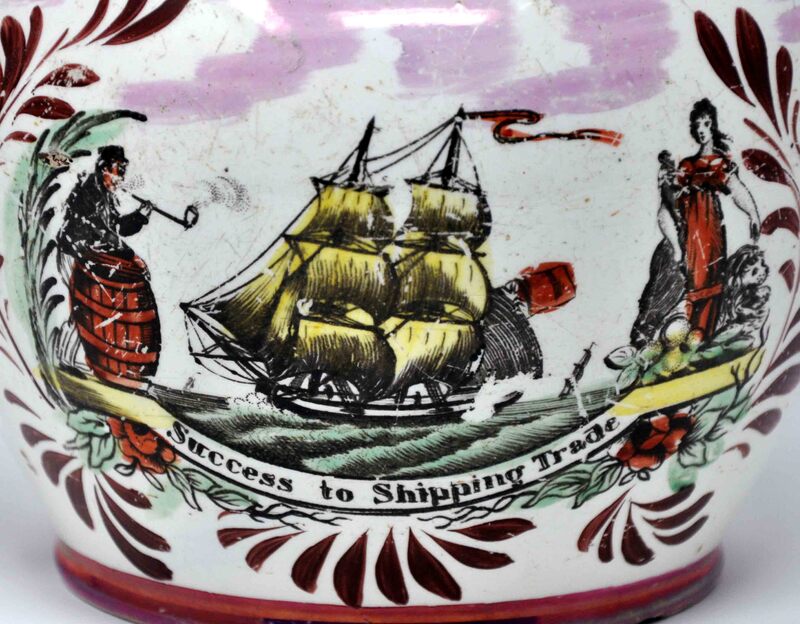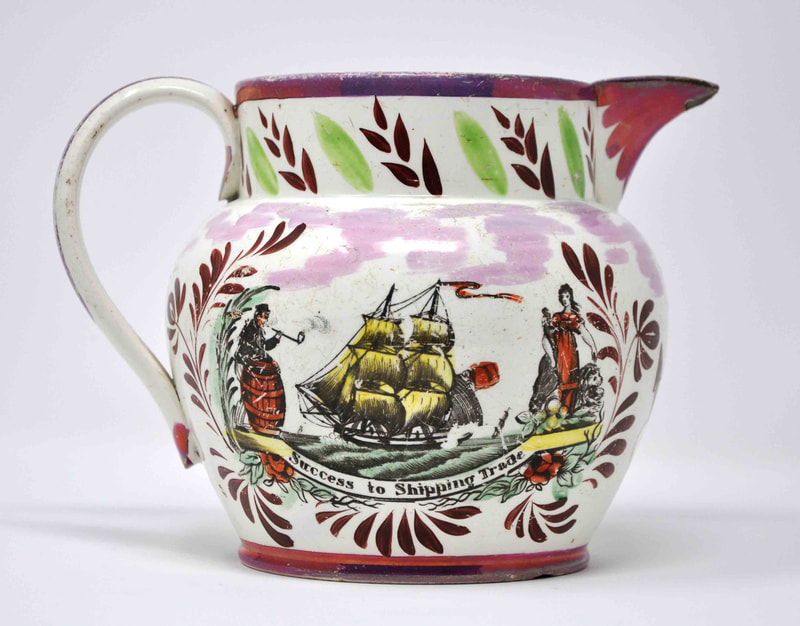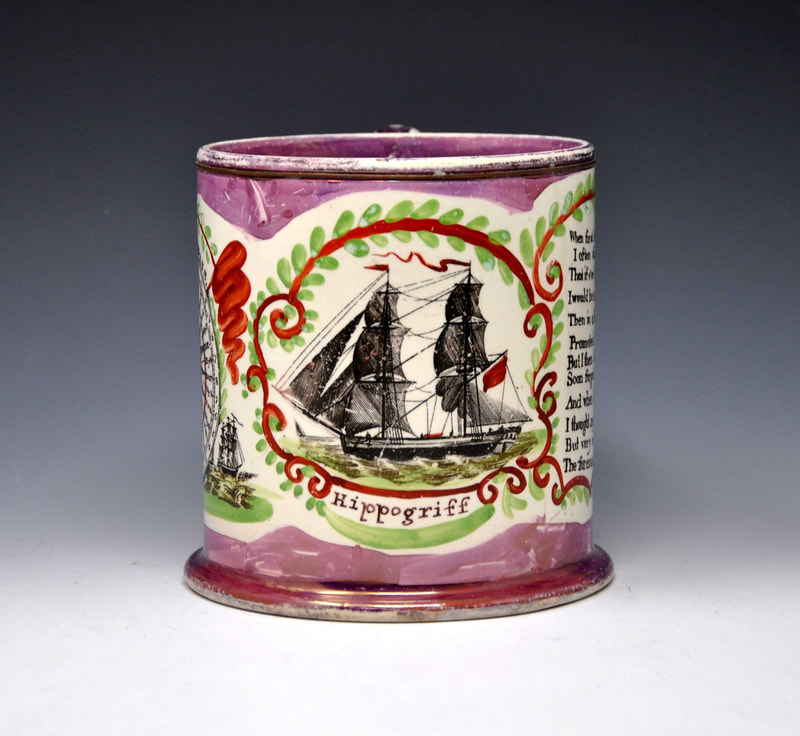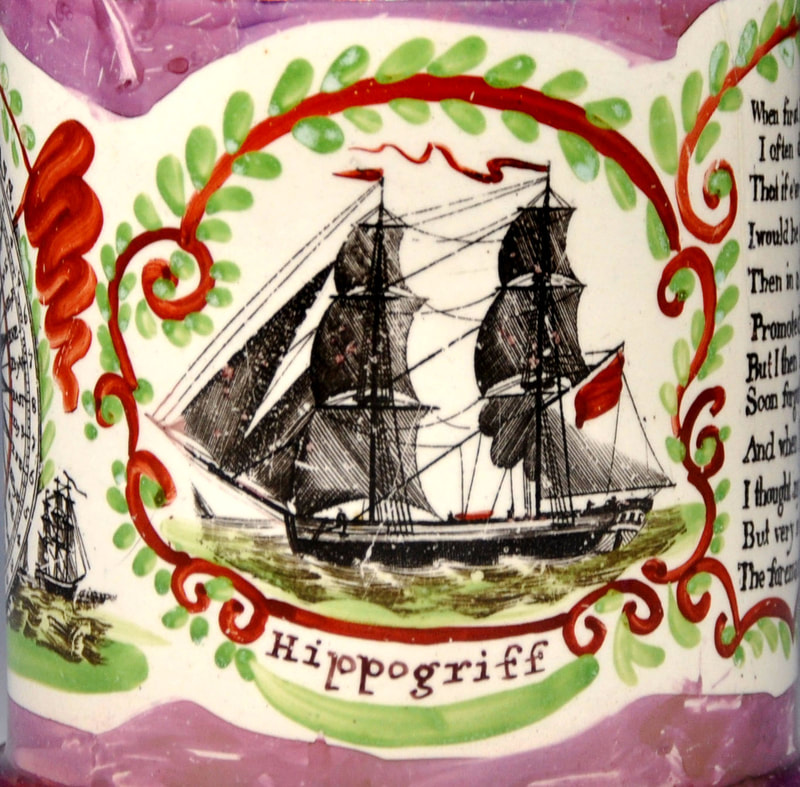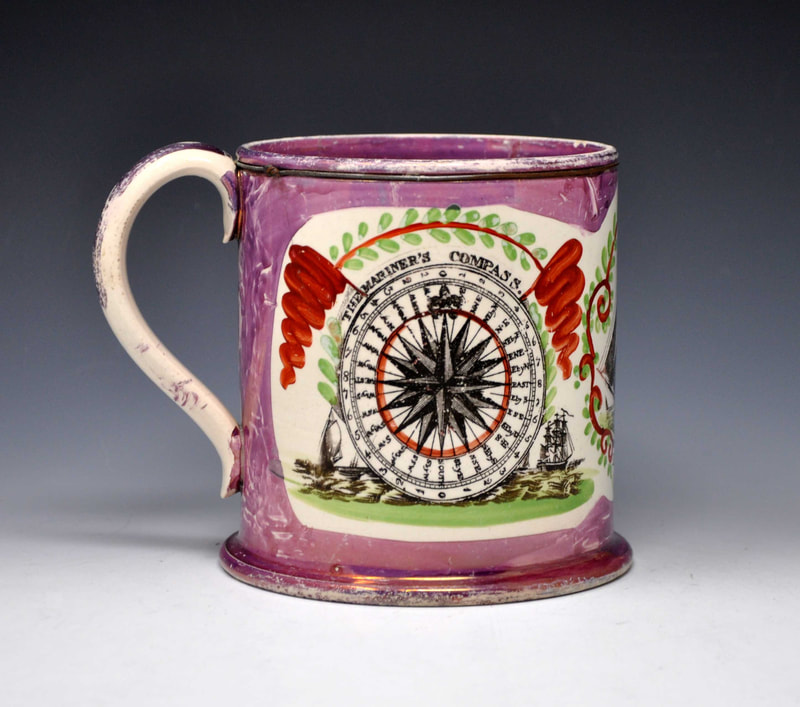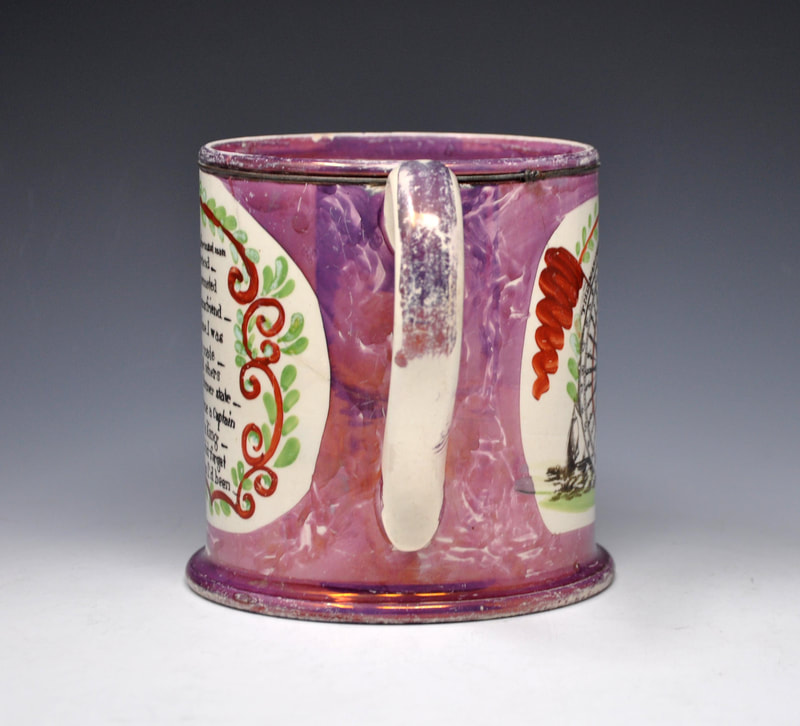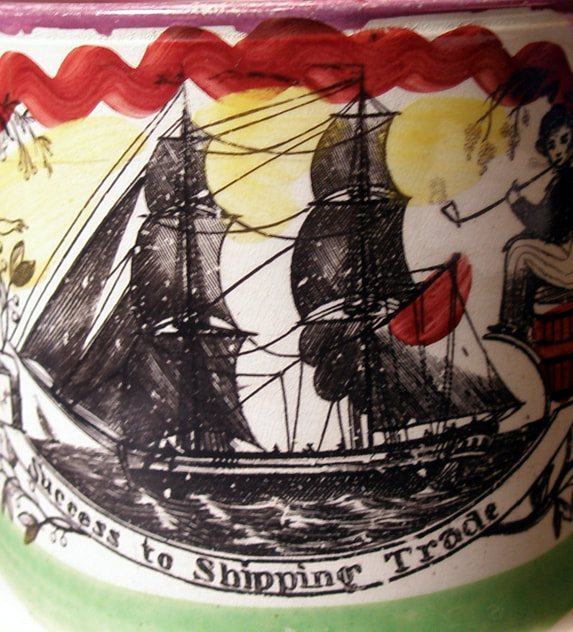Success to the Shipping Trade... – Tyneside
See also the May Peace Once More... page for transfers with a similar ship.
Taylor & Co, Tyne Pottery, Newcastle – without title
The untitled transfer on a large creamware jug. The right photo shows how the printed mark appears on a cylindrical jug with the same verse transfer. Bell (p104) says they transferred their business to the Newcastle Pottery, Skinnerburn in 1827, and to Forth Banks in 1829.
Attributed to Bird & Co, Northumberland Pottery, North Shields, 1823–1826? – with title
The small frog with red eyes and mouth appears to be a copy of those used by Dixon at the Sunderland Pottery in the 1820s. In the Tyne versions, the ship is flanked by two figures representing Commerce and Hope/Industry (the beehive).
A 'canary yellow' jug with the transfer, also attributed to the Bird & Co partnership at North Shields, from the 1820s.
Attributed to Cornfoot, Colville & Co, North Shields, 1828–1832, or Cornfoot, Carr and Co, North Shields, 1832–1838 – with title
The small jugs below with the same transfer are difficult to date. My guess is that they were made c1830. The second has a trimmed down imprint, without the figures on either side, but from the same copper plate.
Attributed to Cornfoot, Colville & Co, North Shields, 1828–1832, or Cornfoot, Carr and Co, North Shields, 1832–1838 – with title
I have attributed this jug (once in the Tolson collection) to one of the earlier North Shields partnerships on the basis that the yellow enamelling on the sails matches the Bird-attributed jug below. The red decoration appears on earlier wares, including items associated with the Alnwick election (1826).
Note the very neat horizontal lustre stripes on the handle. They would become a signature for North Shields, but are applied in a more slap-dash way on later items.
Note the very neat horizontal lustre stripes on the handle. They would become a signature for North Shields, but are applied in a more slap-dash way on later items.
Collingwood & Beall, North Shields Pottery, 1814?–1823 – without title
The transfer is from the same copper plate as the Cornfoot, Carr & Co examples below that don't have a title. This jug has a printed mark for 'Collingwood & Beall, N Shields'. Usually when these marks appear, they are partially scratched out and on later, 1830s', pink-lustre items from the C, C & Co partnerships at North Shields. This is the first contender I have seen to be a true c1820 item made by Collingwood & Beall.
Bird & Co, Northumberland Pottery, North Shields, 1823–1827, and Cornfoot, Colville & Co, Low Lights Pottery, North Shields, 1828–1832 – without title
This jug has uncommonly fine enamel decoration in similar brick red and green to the jug above.
The transfer under the spout appears to represent Urania, the Muse of Astronomy. There are initials 'EDW' or perhaps 'EAW' under the transfer.
This creamware jug below, again with brick red, yellow and green enamels, is likely from the early 1820s.
The jug below has the printed mark 'North Shields Pottery Low Lights' under the Northumberland Lifeboat transfer, so was likely made after 1828 when the pottery changed management.
A frog mug, also likely 1820s, with similar enamelling to the jugs above. The frog imitates those made at the Sunderland Pottery (Dixon and partners) around that time.
Attributed to Cornfoot, Carr and Co – without title
Two jugs below with the more familiar version of the transfer without the title underneath. The ship has the same yellow enamel on the sails as the two early examples above, and neat marks on the handle.
Another jug with similar light lustre to the two examples above and a hand-painted inscription, but no date. The enamels on the sails are a straw brown colour.
Three more examples with brown-enamelled sails, but with deeper lustre.
The example below, with black-enamelled sails, is the first dated inscription that I've found coupled with the transfer. It has an inscribed date of 1834. The strokes on the handle are freer than some of the early jugs above and the lustre is darker. Photos courtesy of pickleherring-antique British pottery.
Another example with black enamelled sails. NB black sails would have been a common sight on shipping transporting coal on the 'Coaly Tyne'.
Below, a huge and finely potted North Shields jug with the transfer and a hand-painted inscription. The marks on the handle are relatively neat.
The jug above is attributed to the Cornfoot, Carr & Co partnership (1832–1838) on the basis of the very similarly decorated jug below with the inscription 1836.
A rare and relatively early chamber pot with an identically decorated transfer.
The jug below, also with similar decoration, has an unusual combination of religious and shipping transfers, with the erased factory mark of an earlier North Shields partnership, 'Collingwood & Beall'.
Attributed to Cornfoot, Carr and Co – without title, green enamels
The green decoration on this jug appears to be an attempt to emulate Robert Maling's nearby Ouseburn Bridge Pottery in Newcastle. However, the Maling jugs with green flecks from the 1830s, never have the distinctive lustre decoration to the handle mentioned above.
Attributed to Cornfoot, Carr and Co – without title, black stripe
Attributed to Carr and Patton – without title, blue foot
More rarely, the transfer is found on handsome blue-footed jugs, again with the marks on the handle. The distinctive blue foot appears to be peculiar to North Shields, c1840.
First below, a small blue-footed jug, and beneath it a larger one with the Fortune Hunter transfer. The straw-coloured enamelling of the sails on the second jug is similar to the jug above.
Attributed to Robert Maling, Ouseburn Bridge Pottery
The wheat ear decoration around the collar is typical of Robert Maling's wares from the 1820s. Read more here.
Attributed to Robert Maling, Ouseburn Bridge Pottery
The heavy use of yellow enamel suggests that these green-flecked jugs were made in the late 1830s.
The transfer trimmed down and repurposed as a ship named Hippogriff on a mug from the early 1830s.
This mug has bold red decoration like the C, C & Co jug at the top of the page. However, this wavy red enamel and green stripe are typical of Robert Maling c1840. Take a look at the Life Boat page for further examples..


